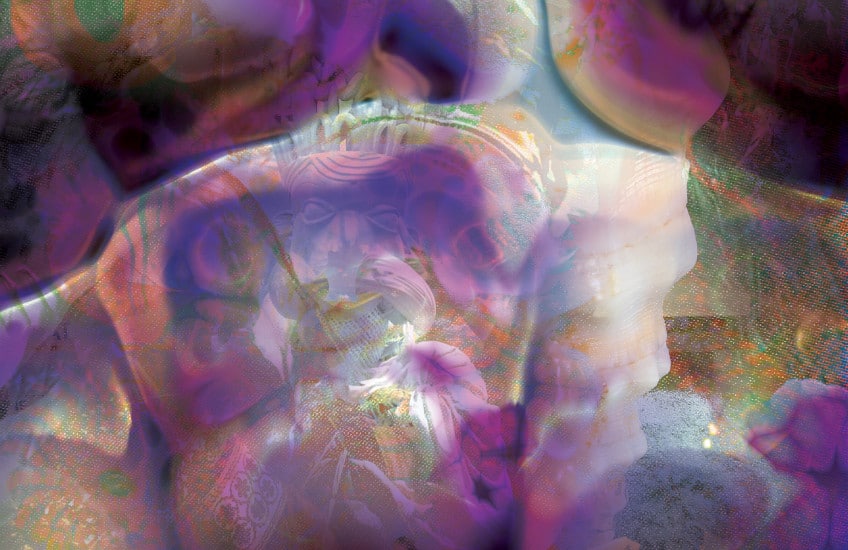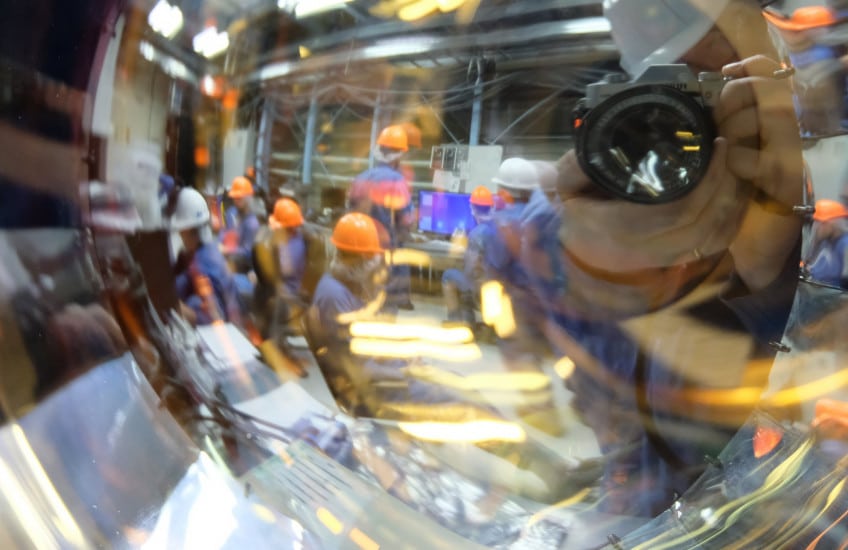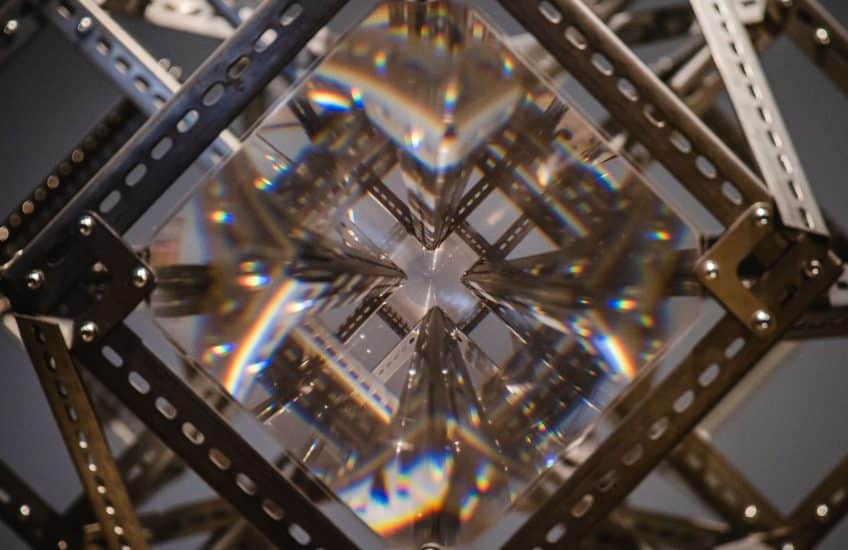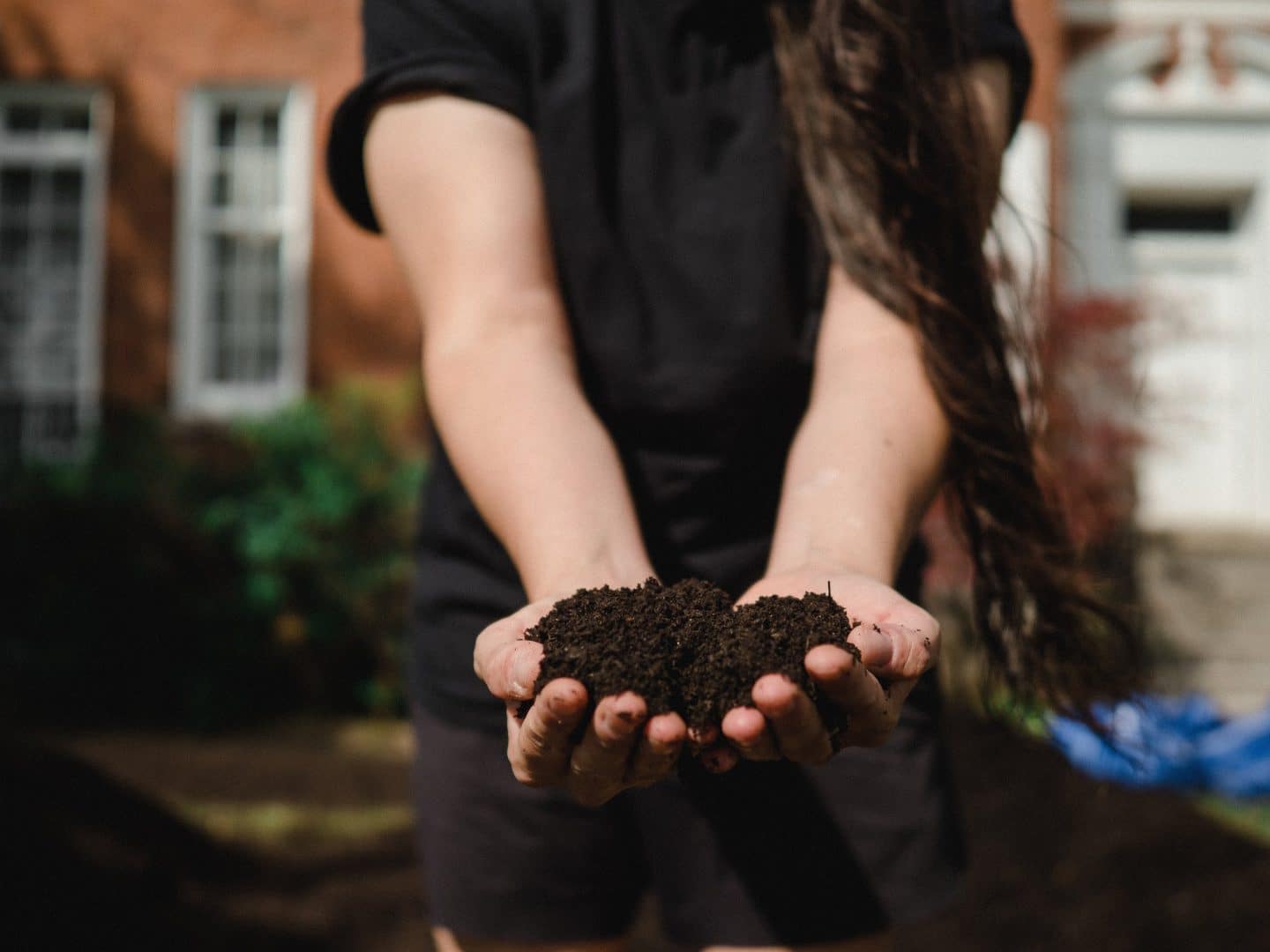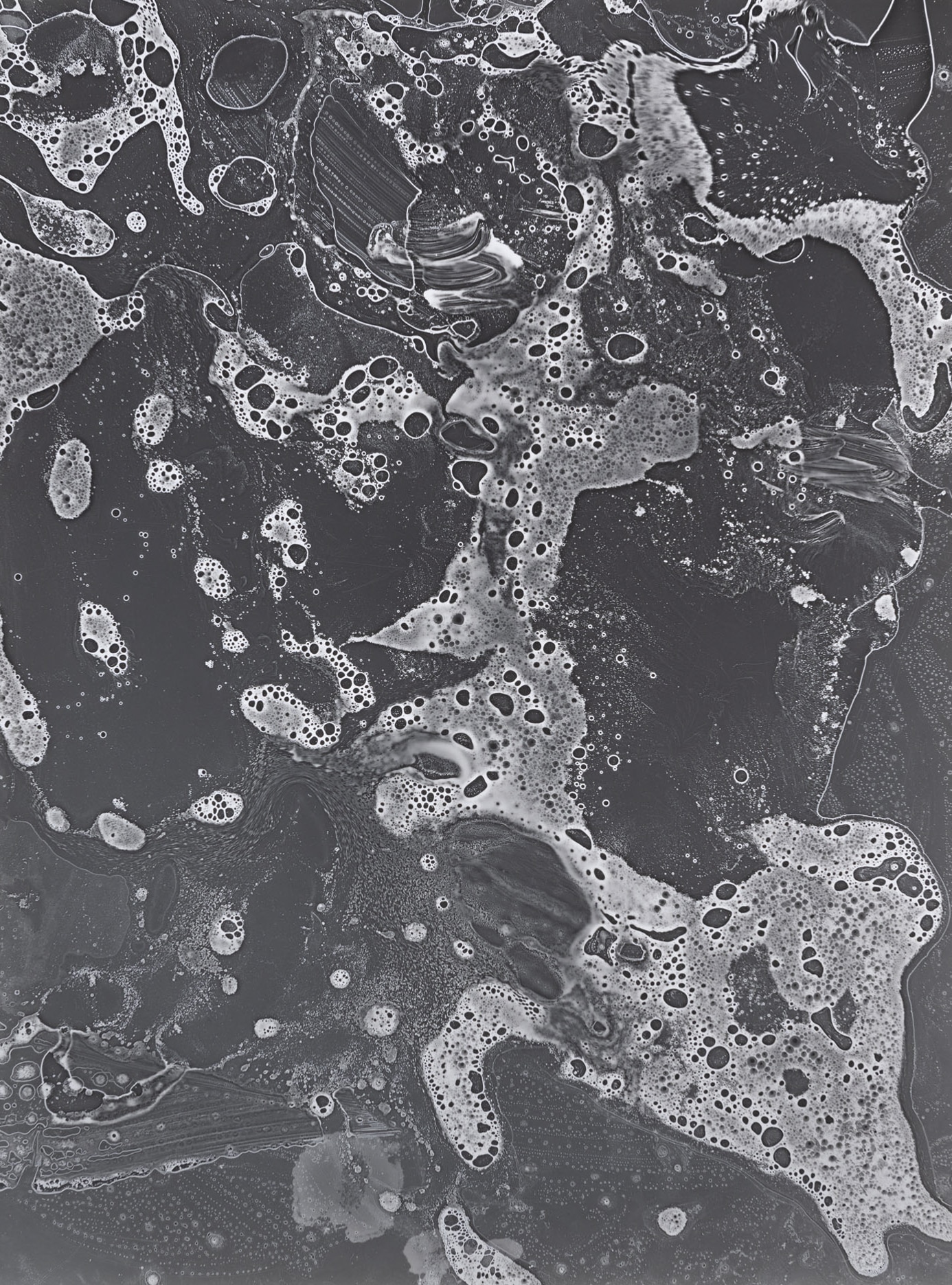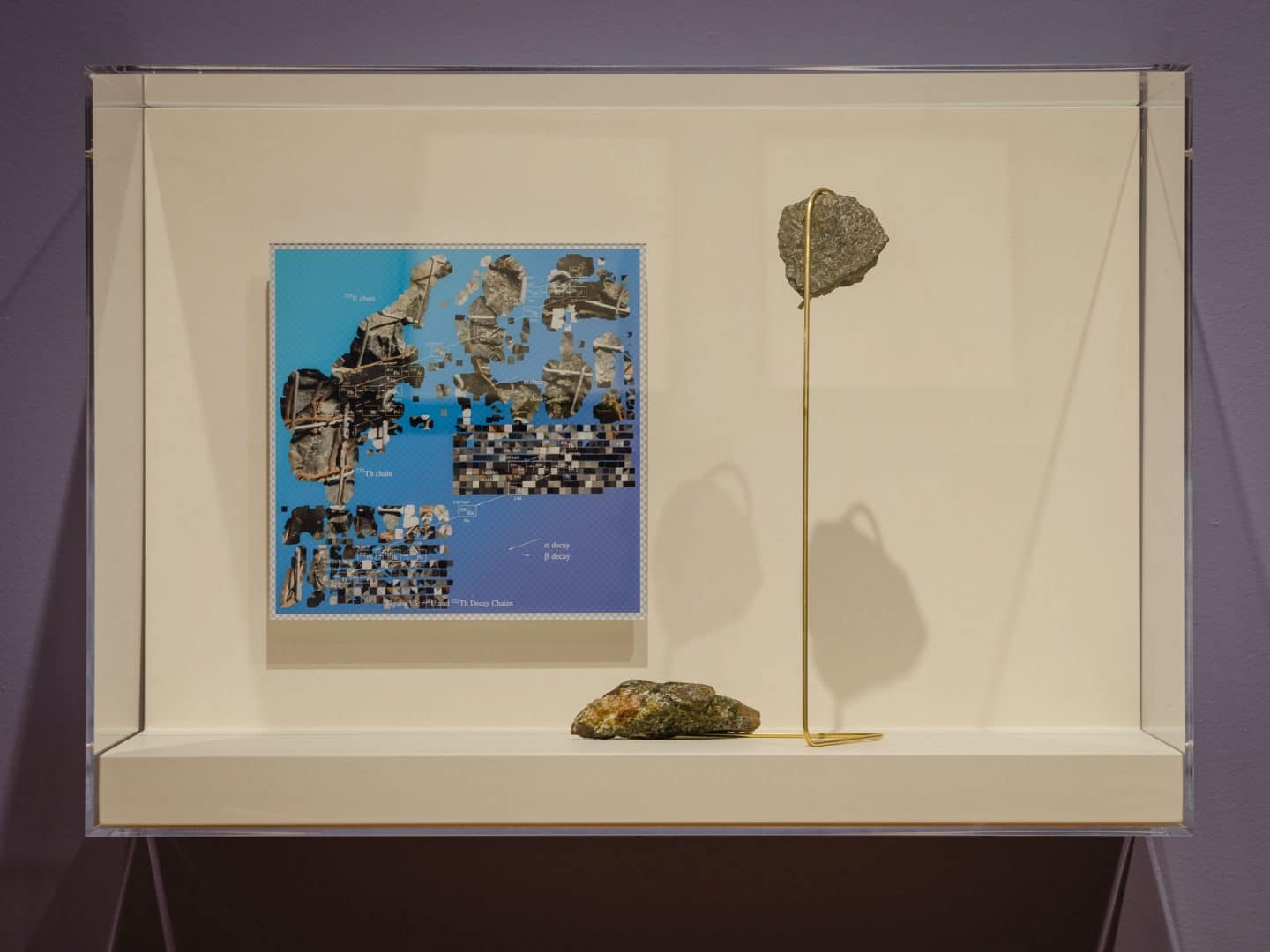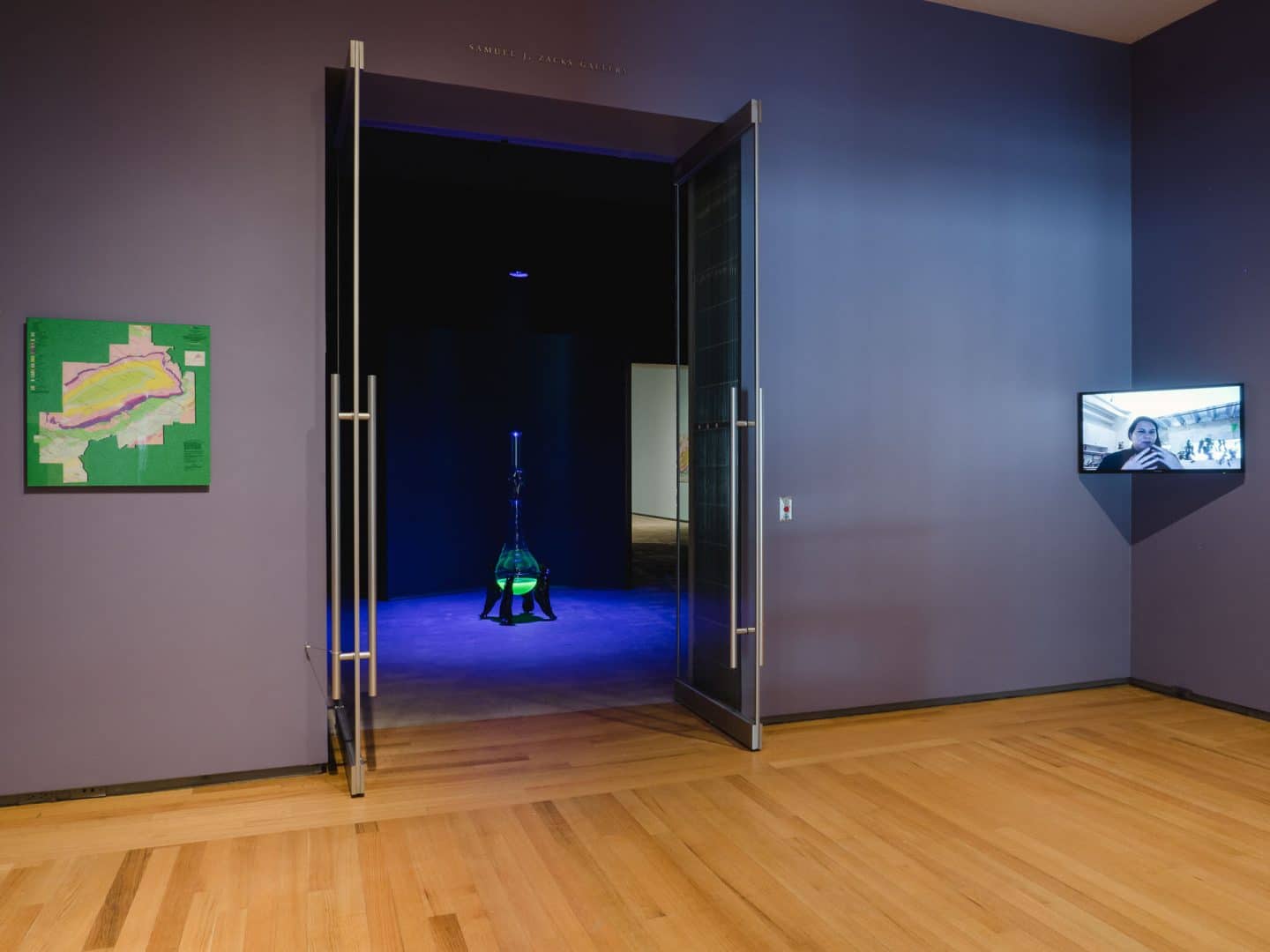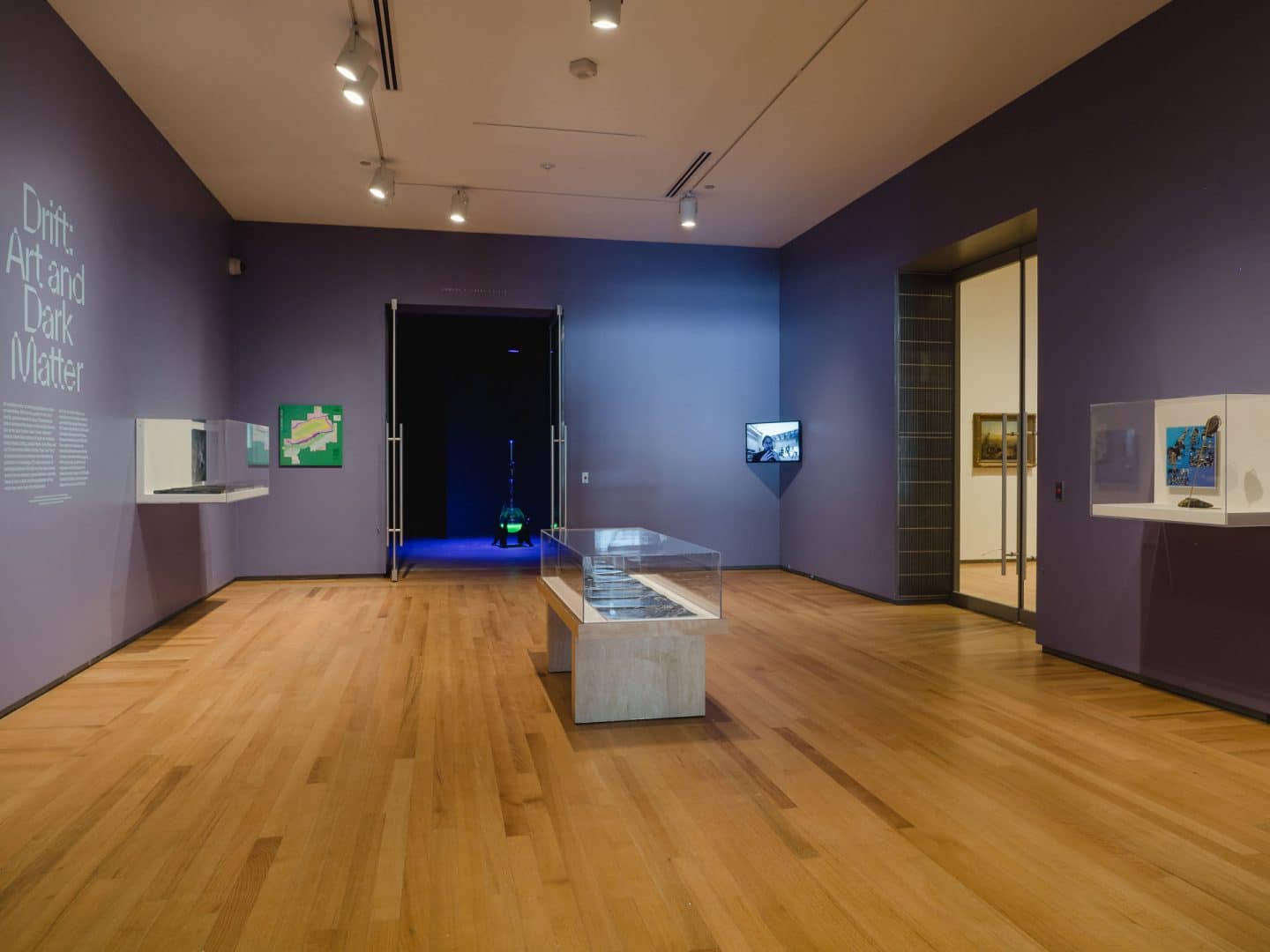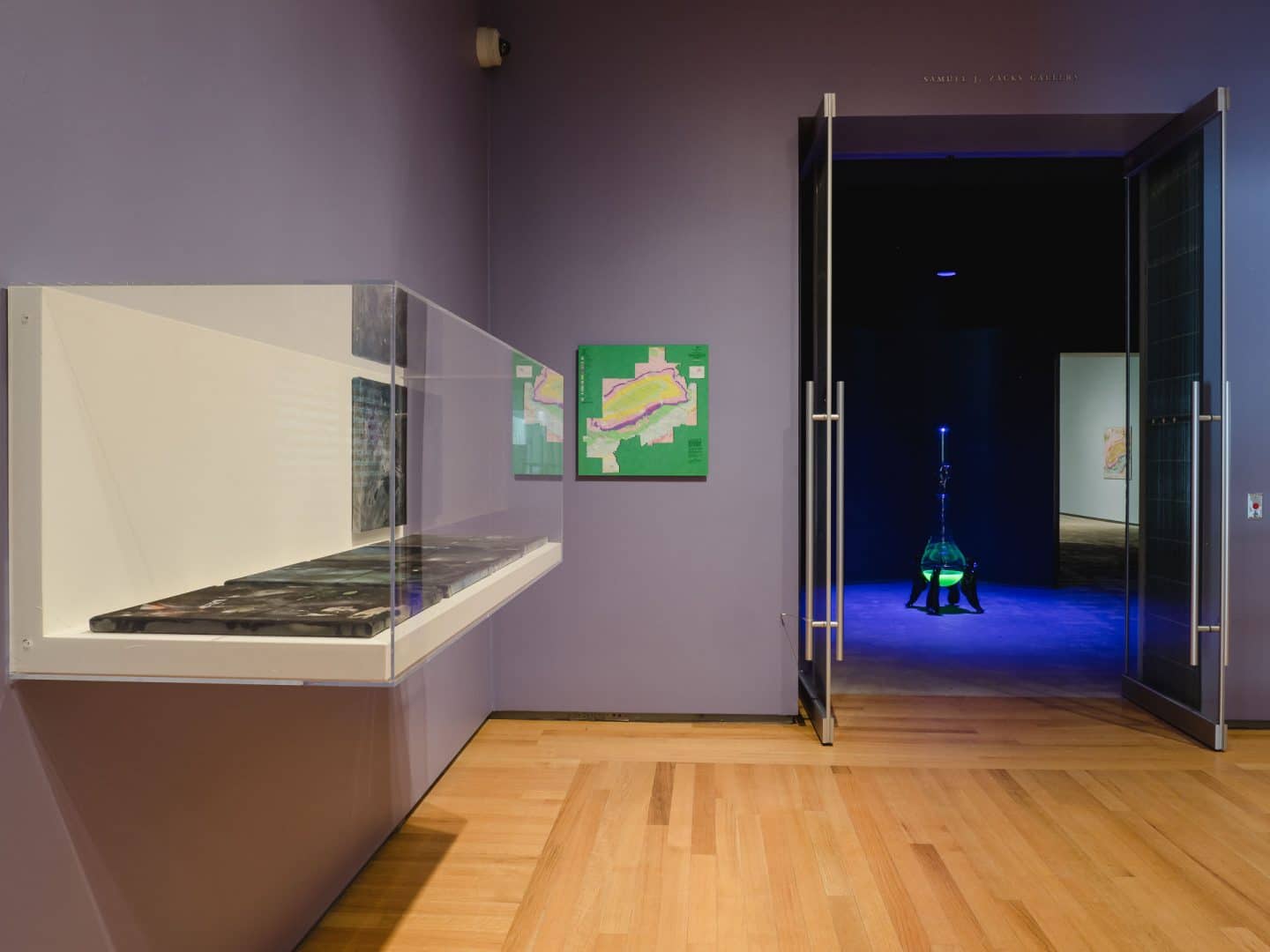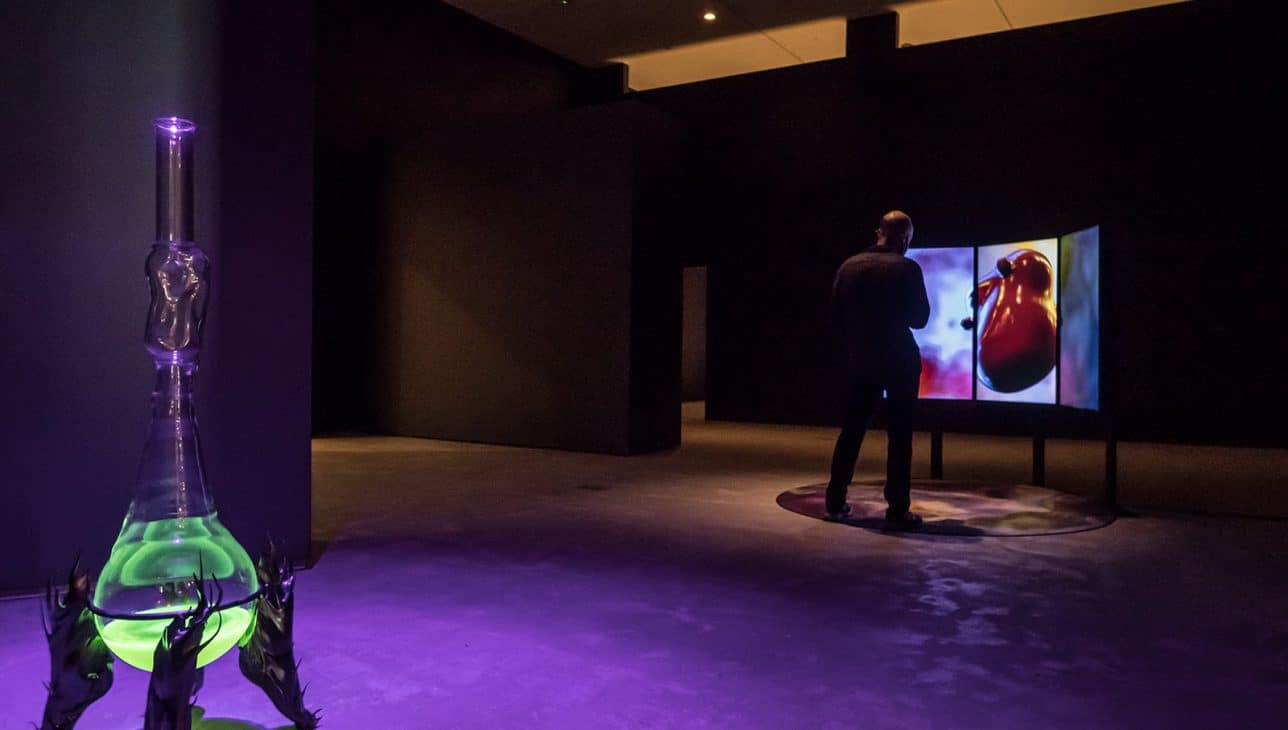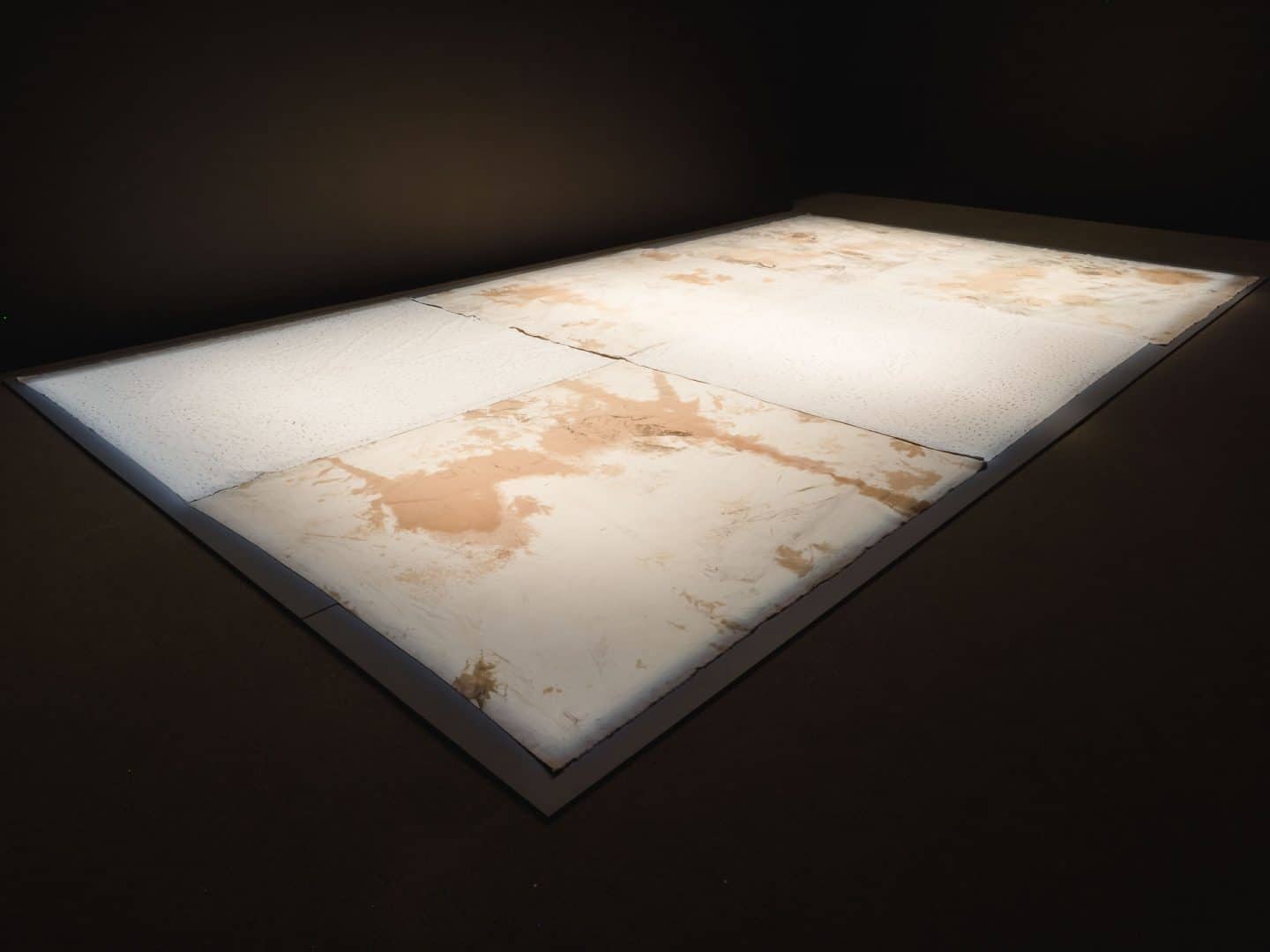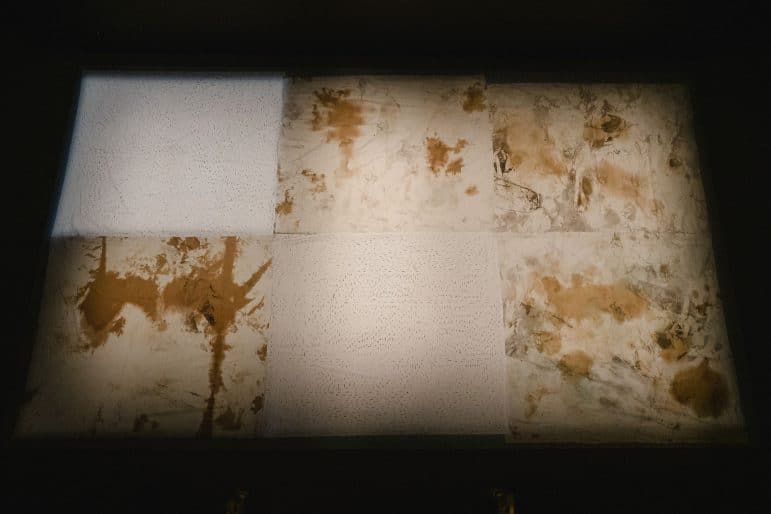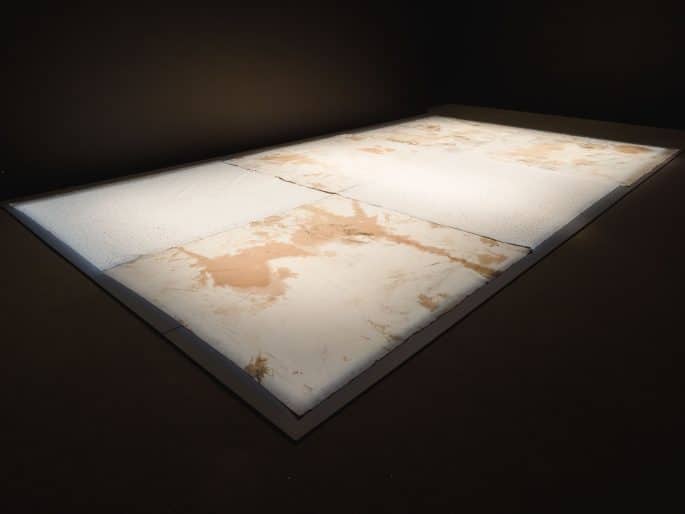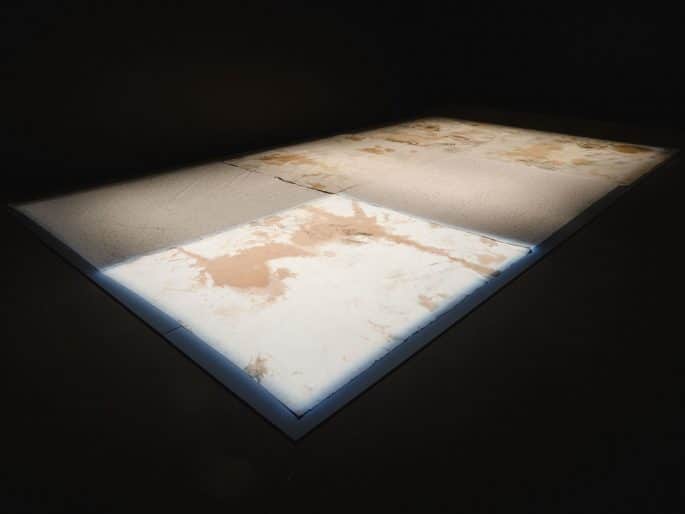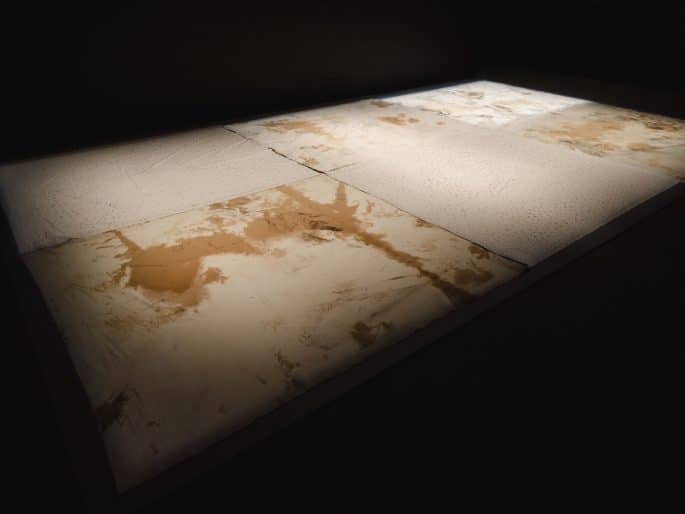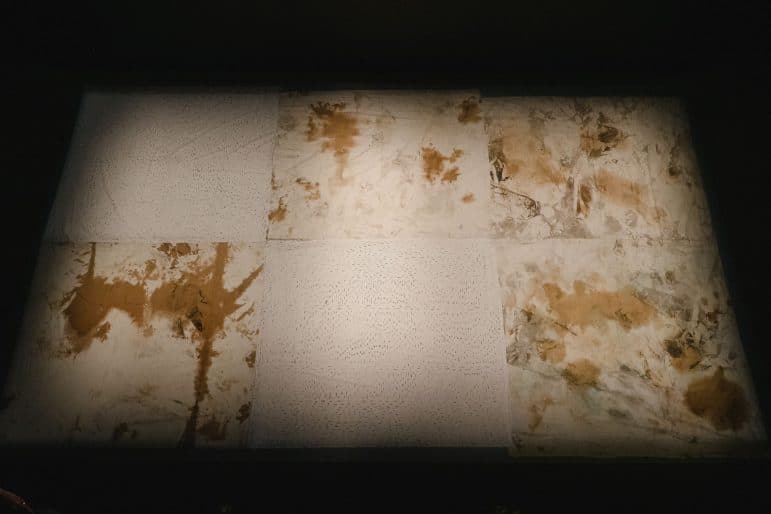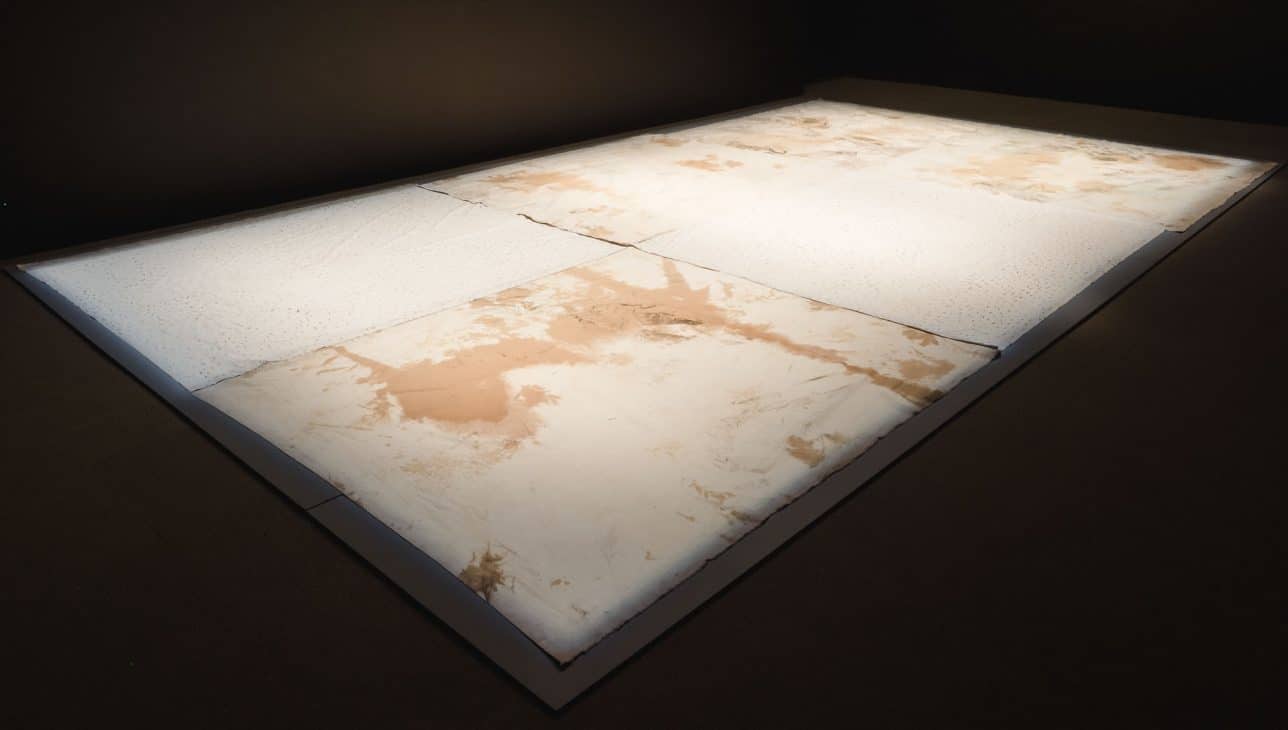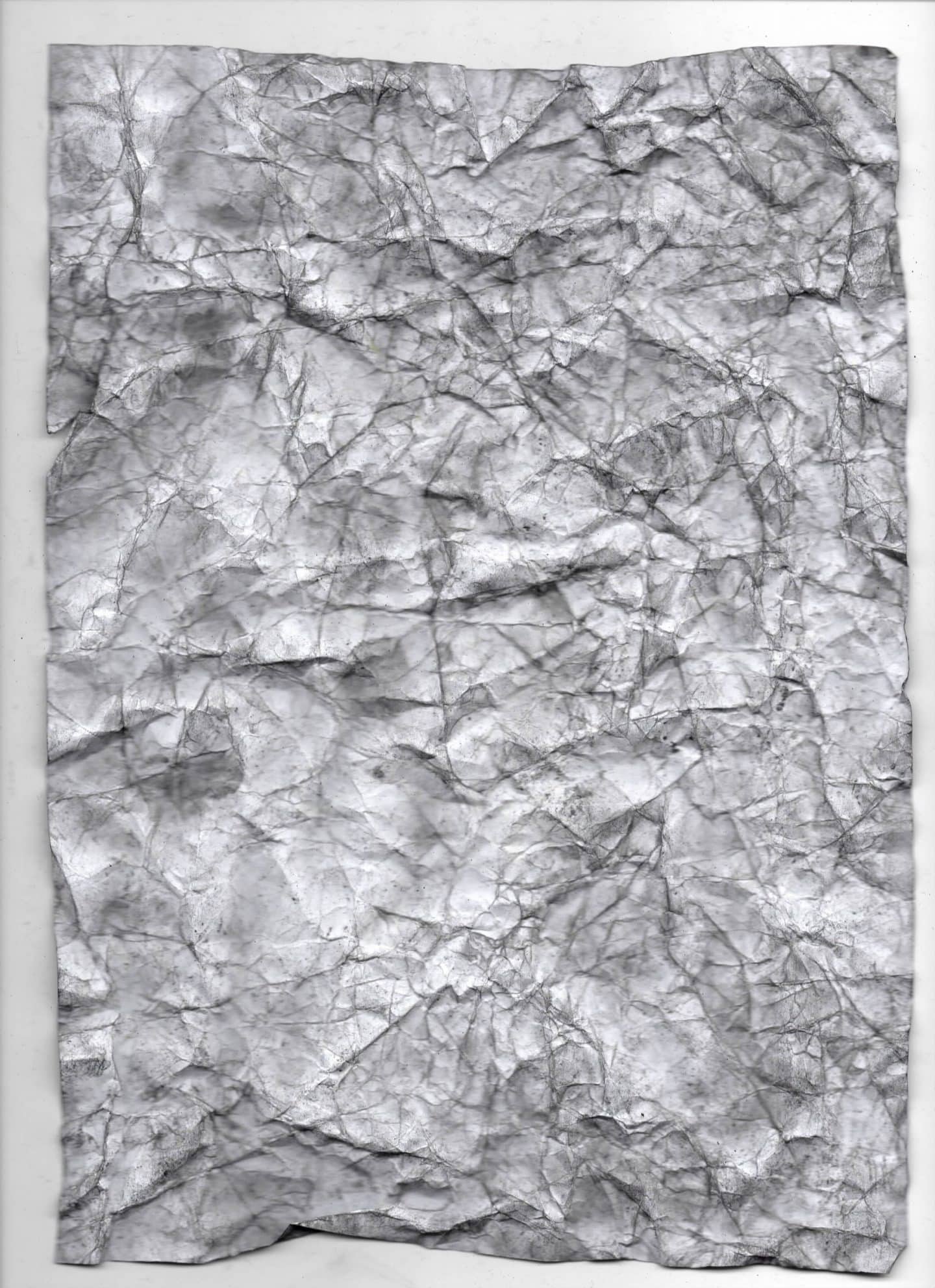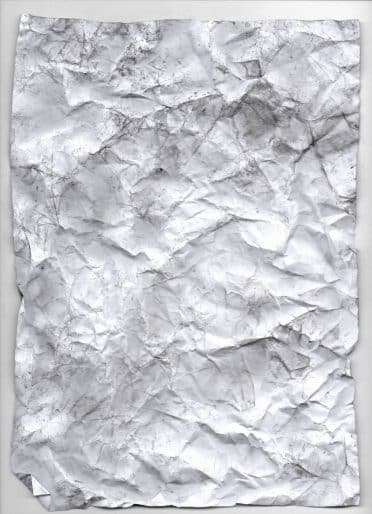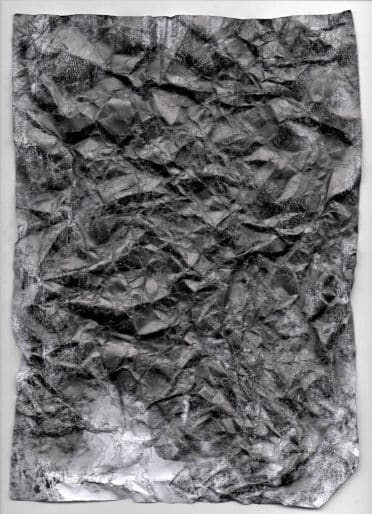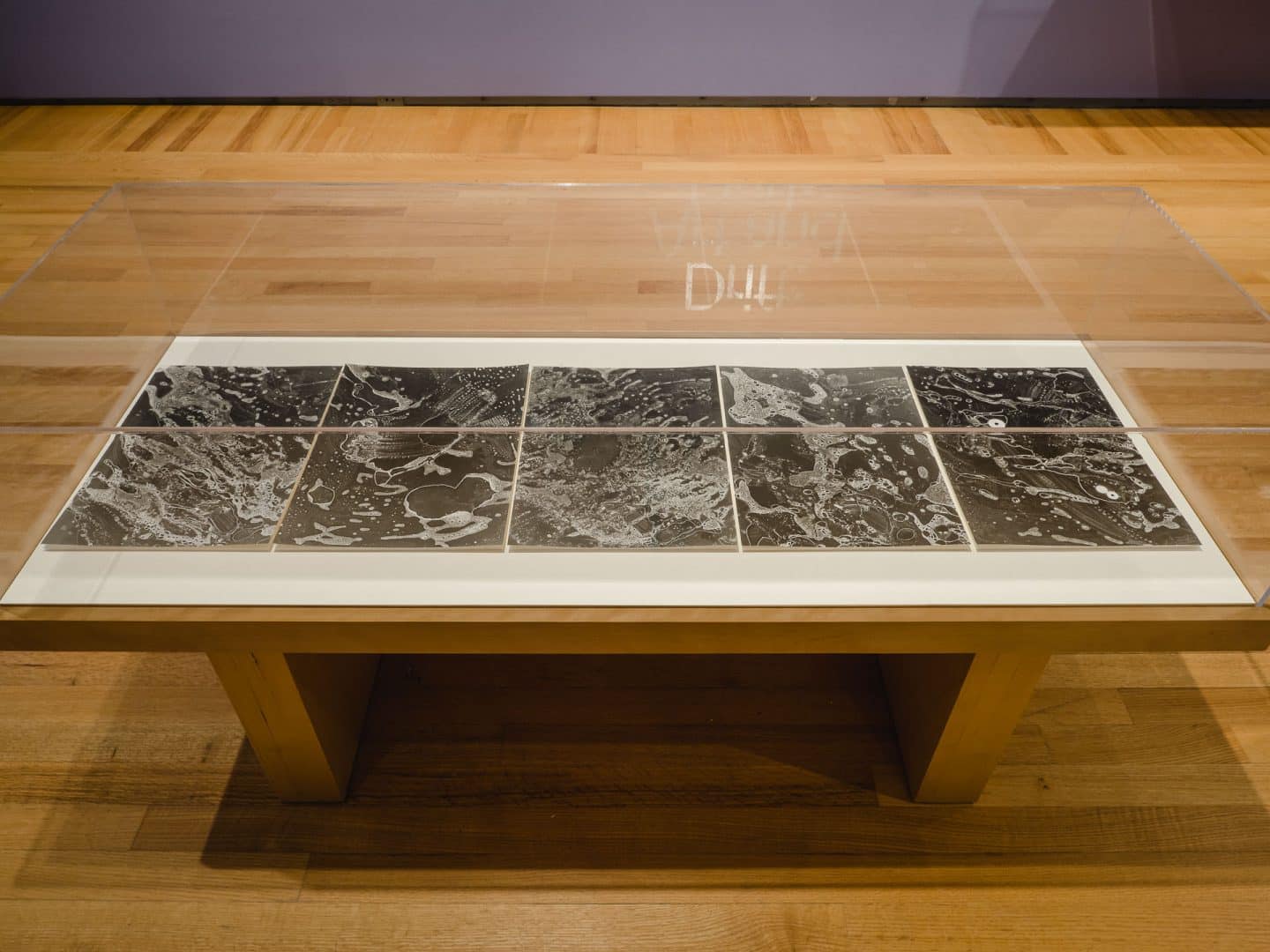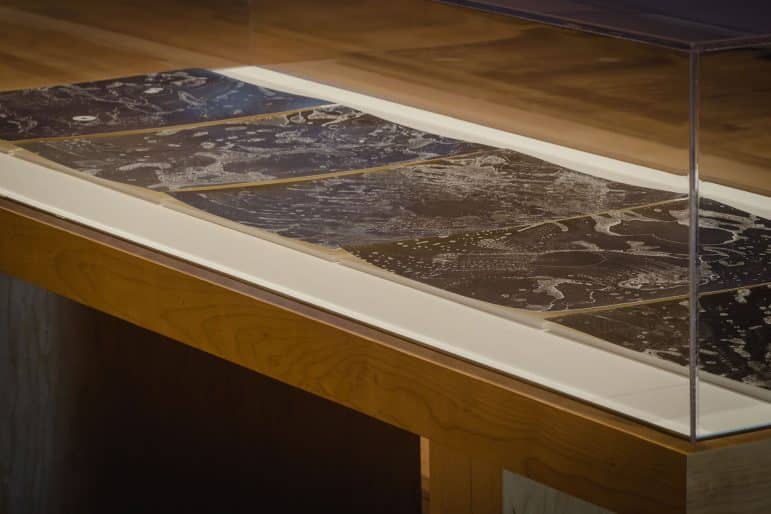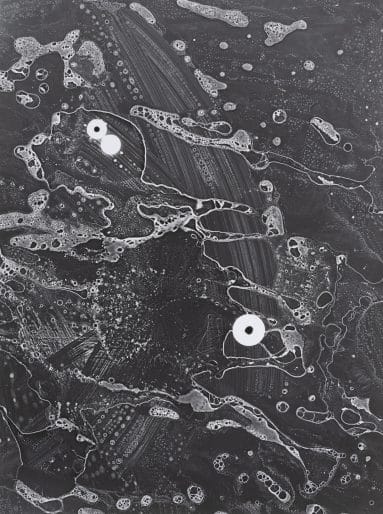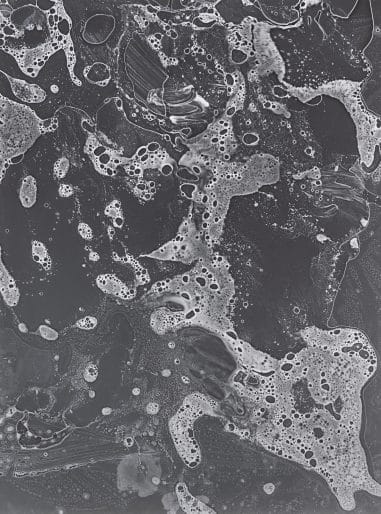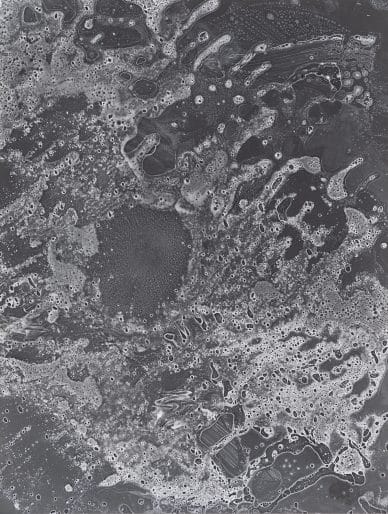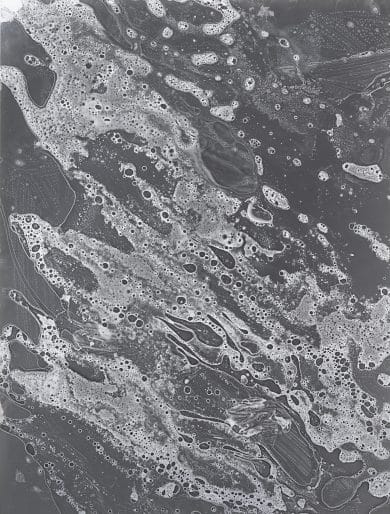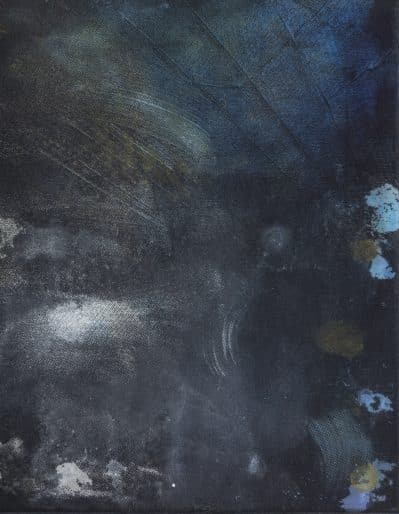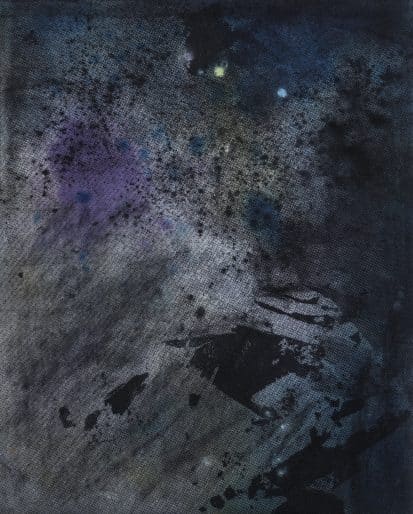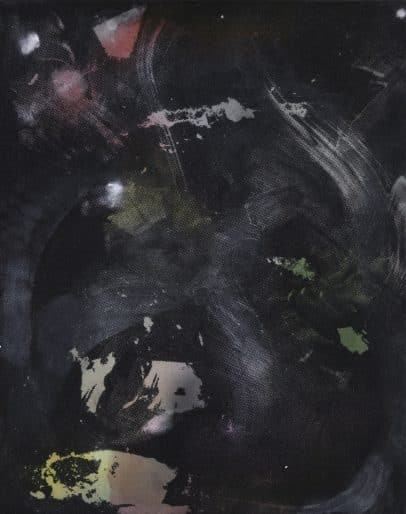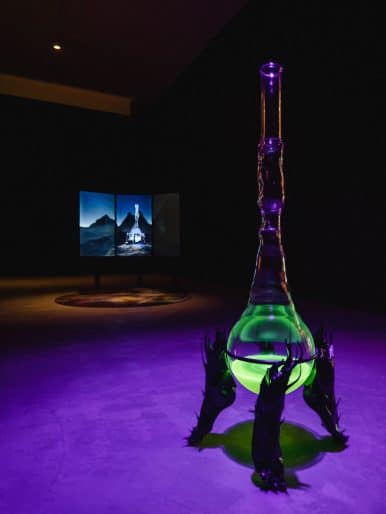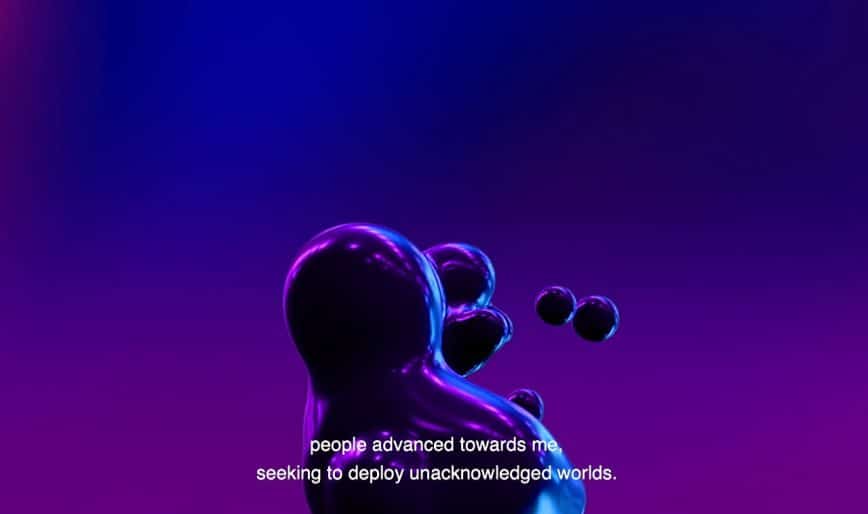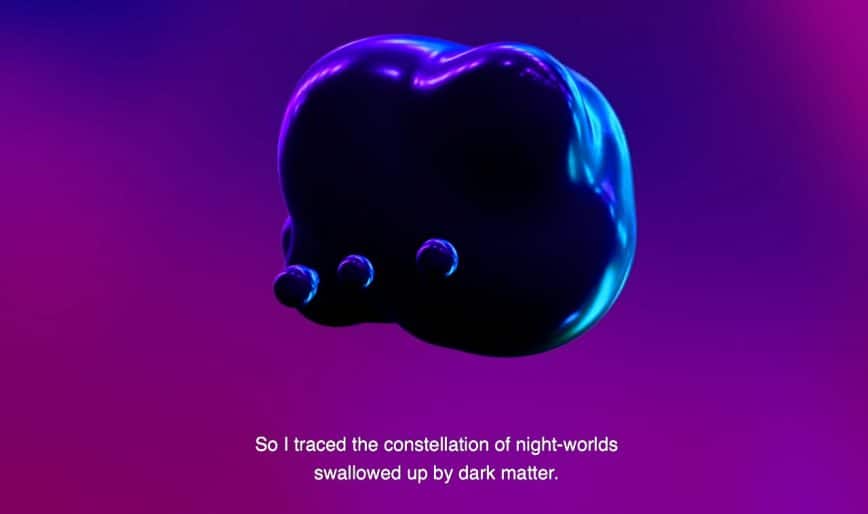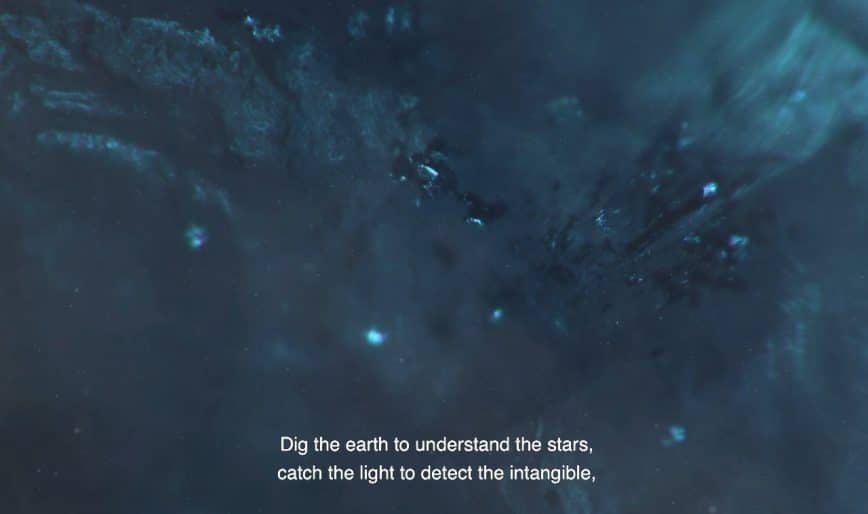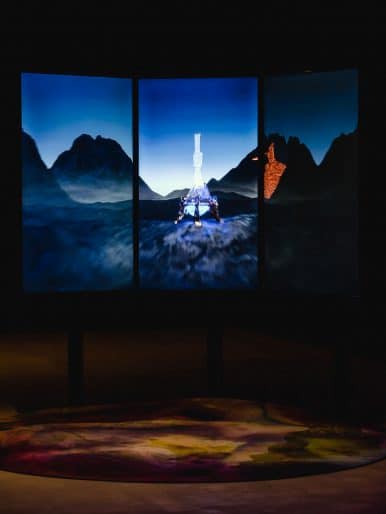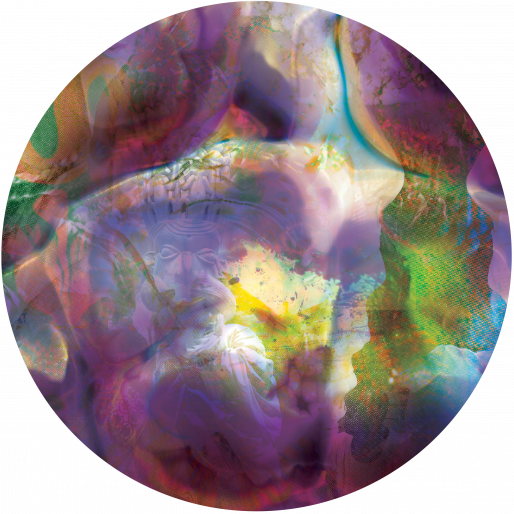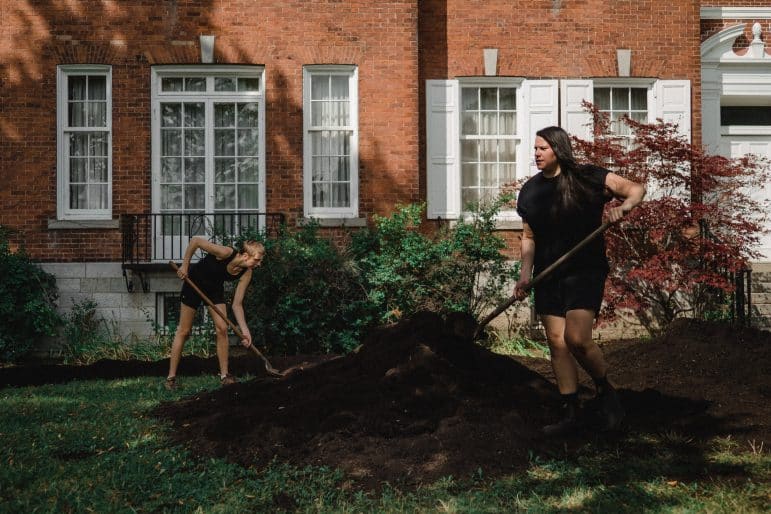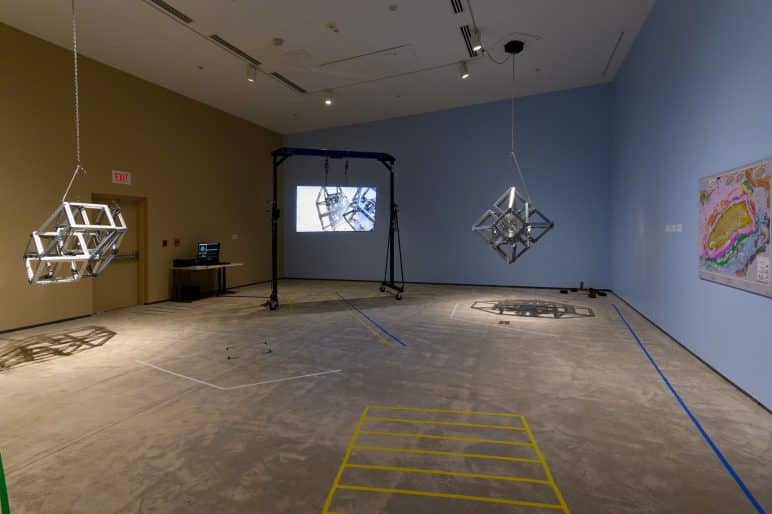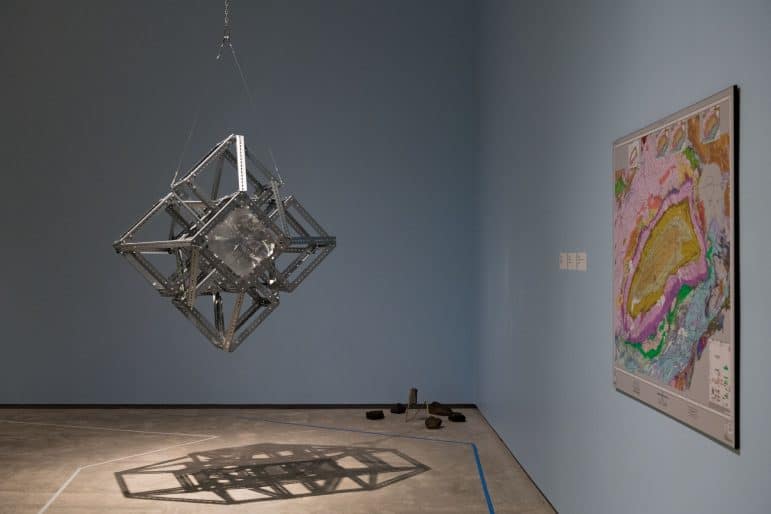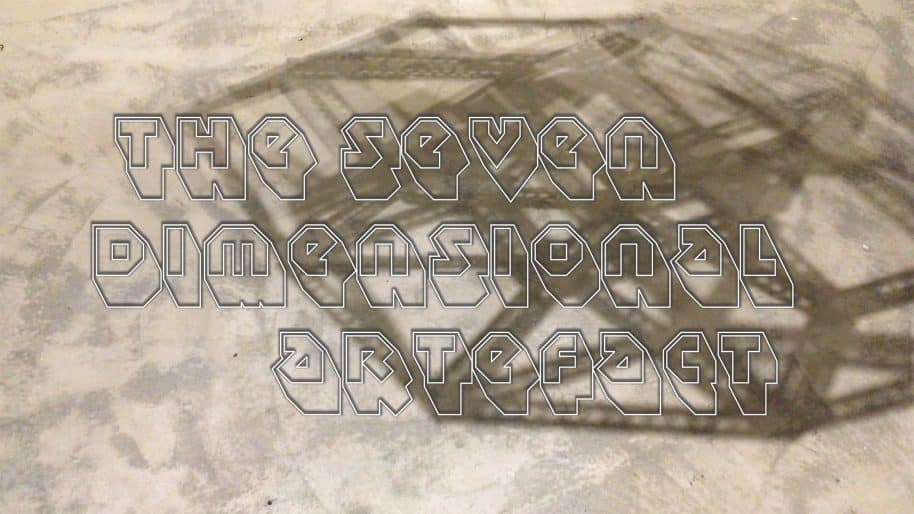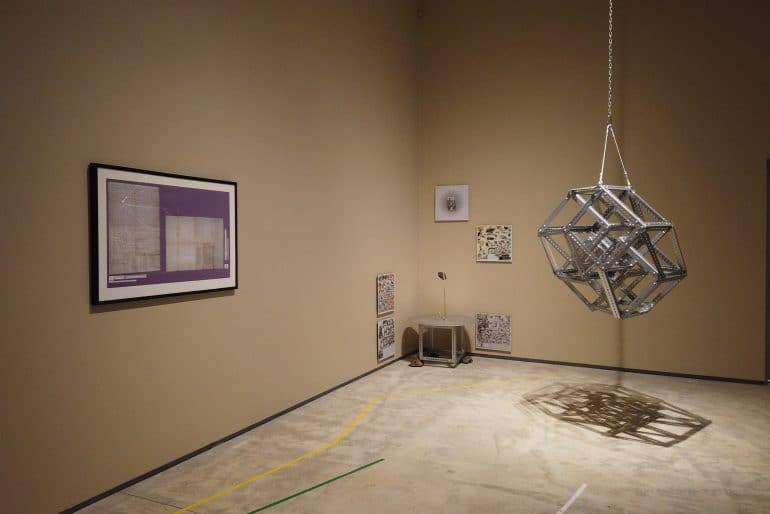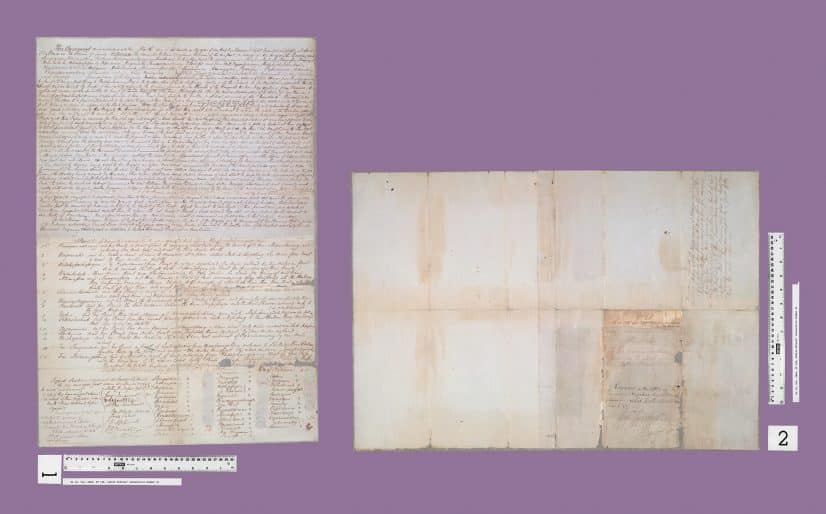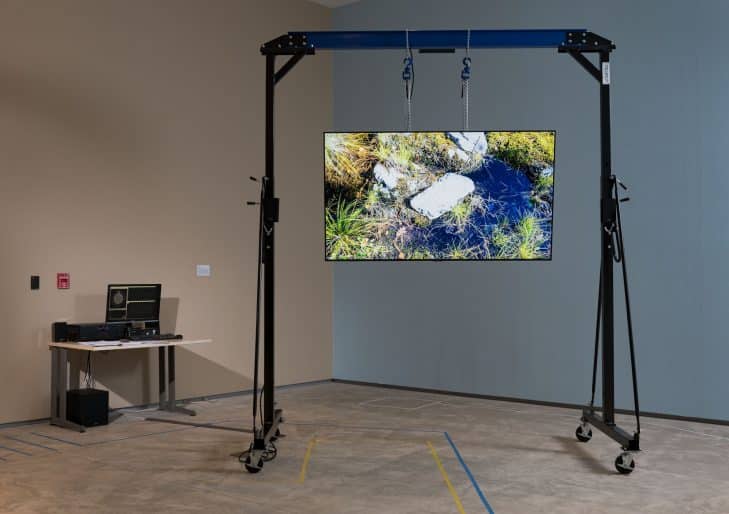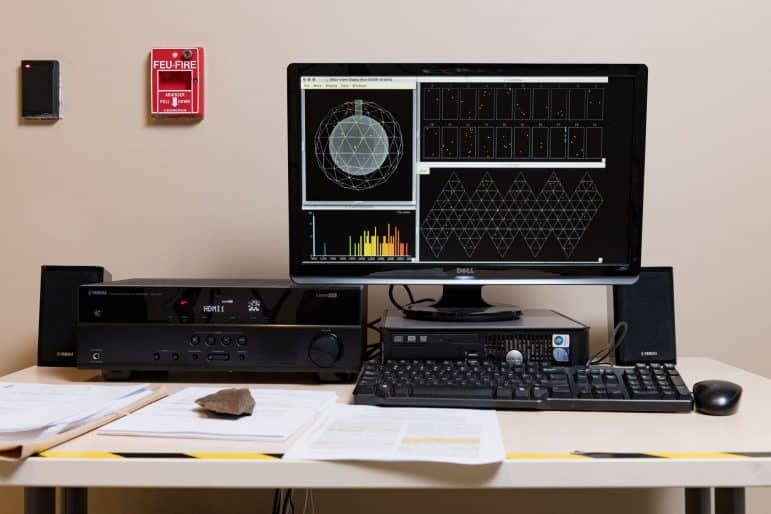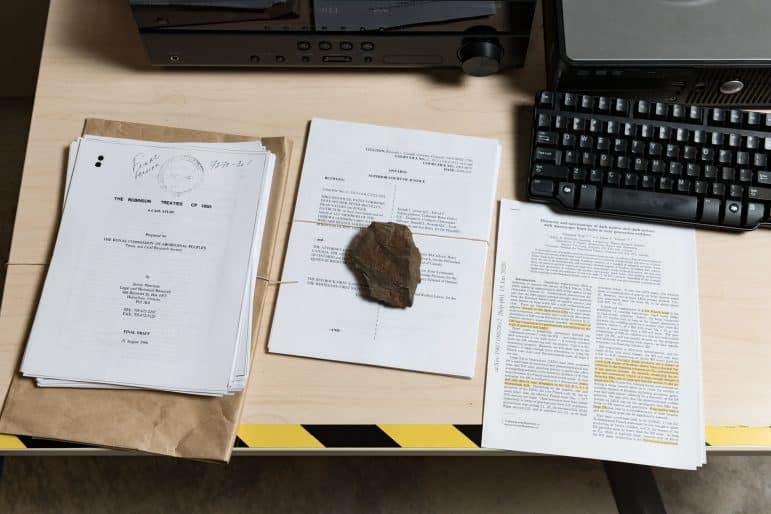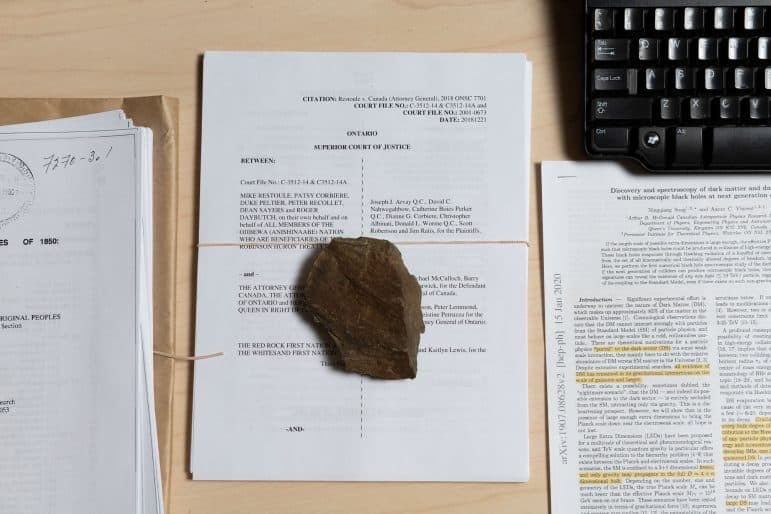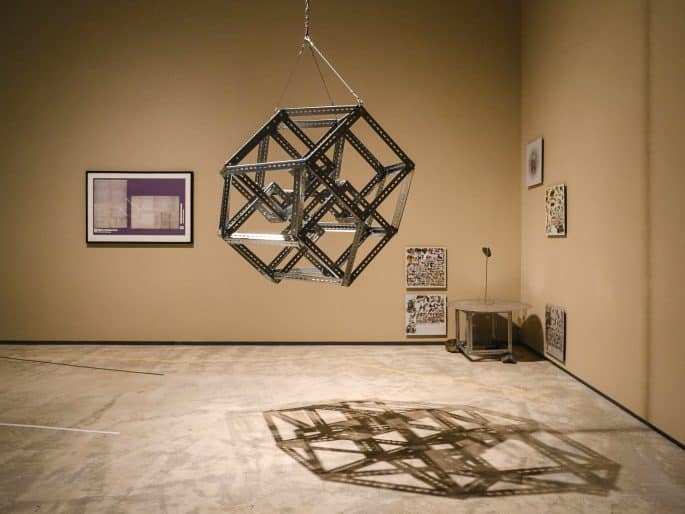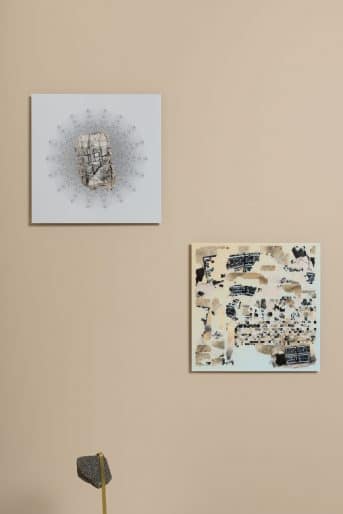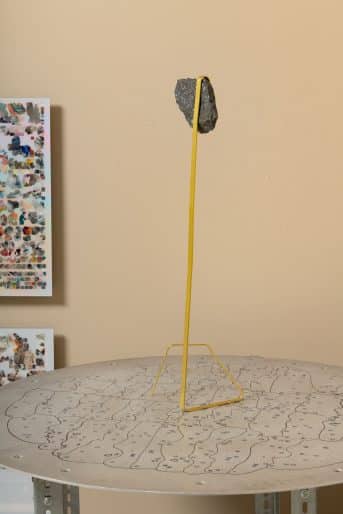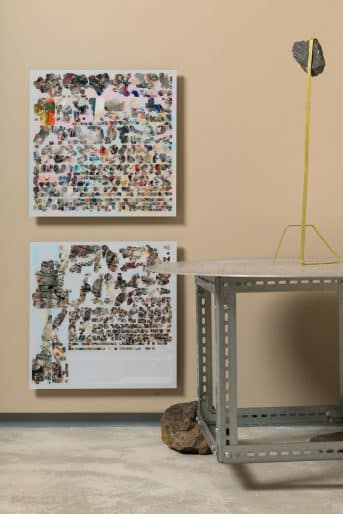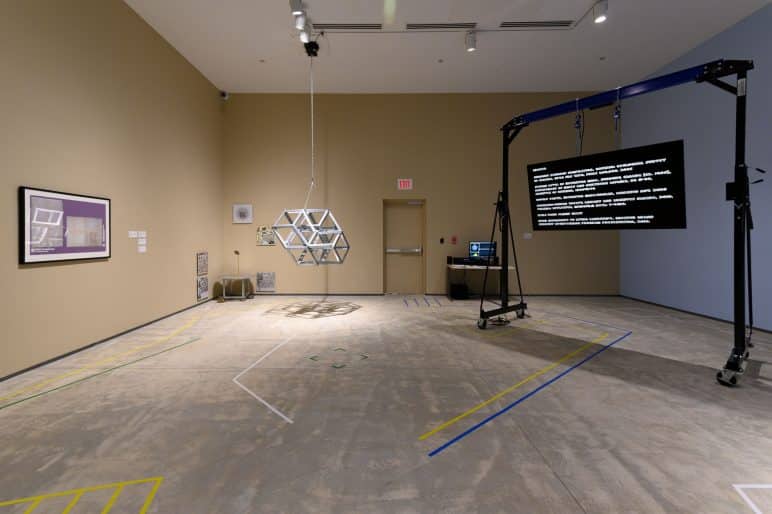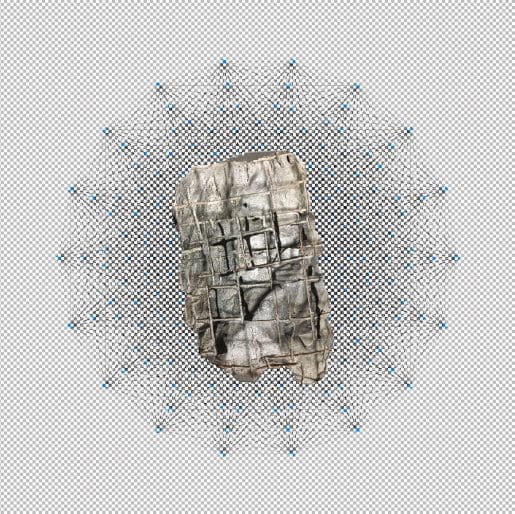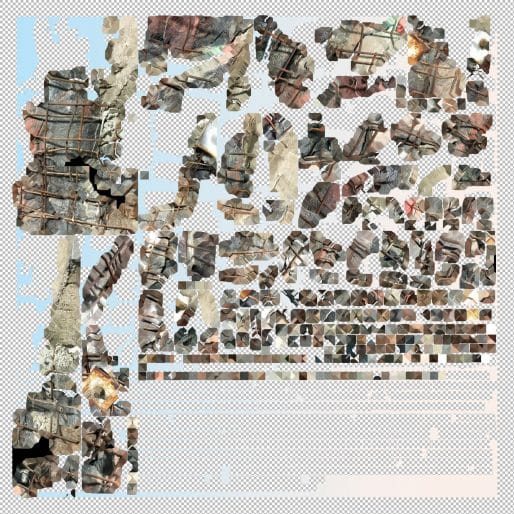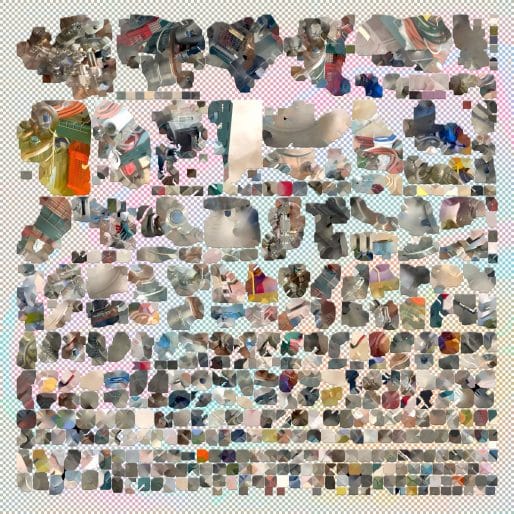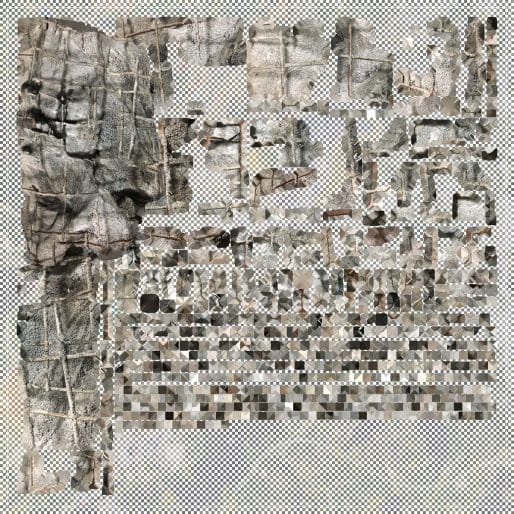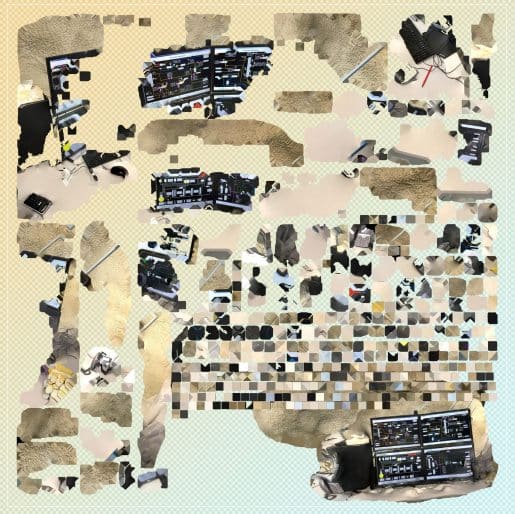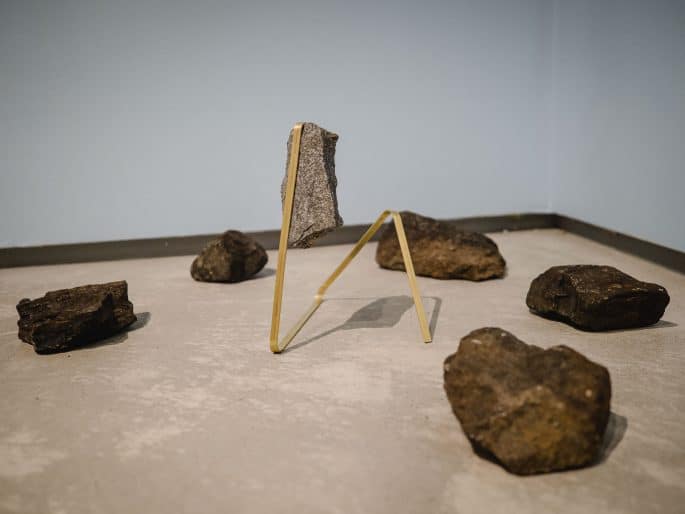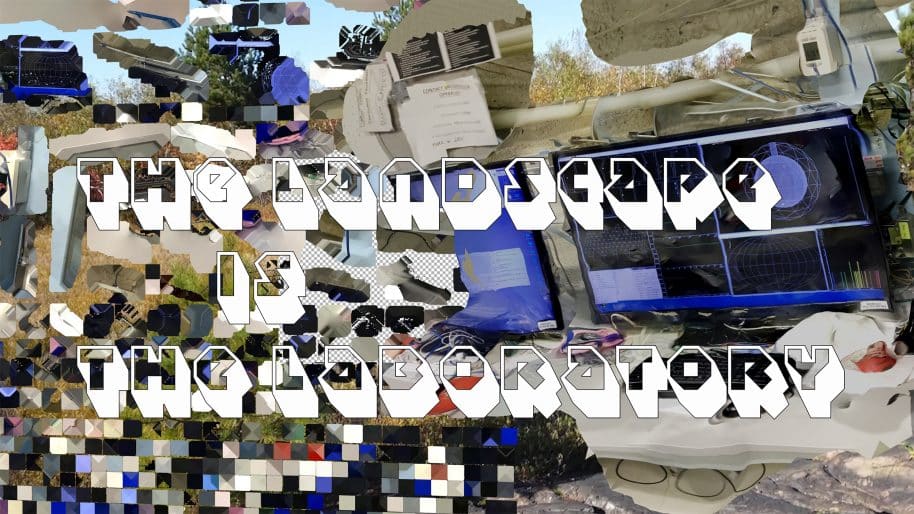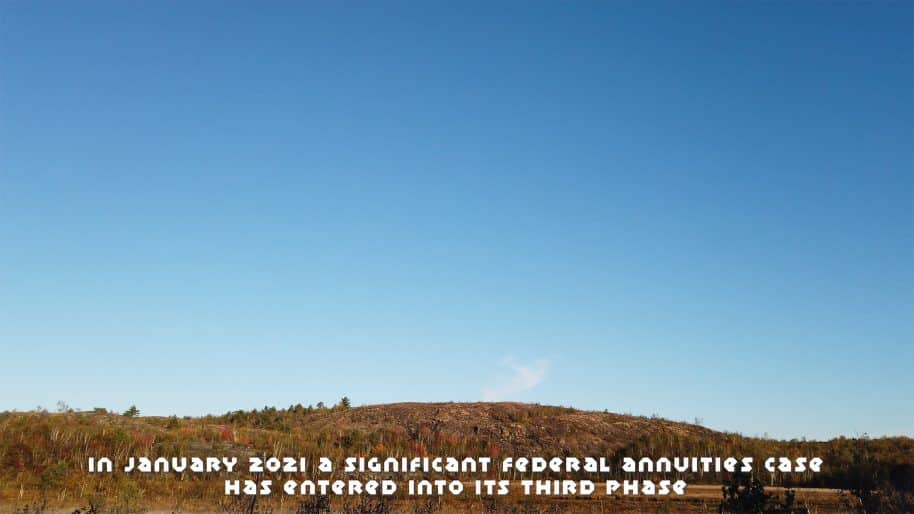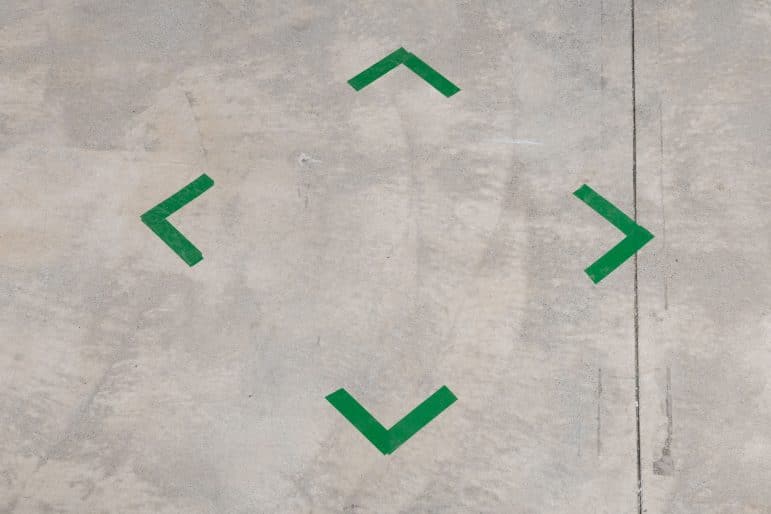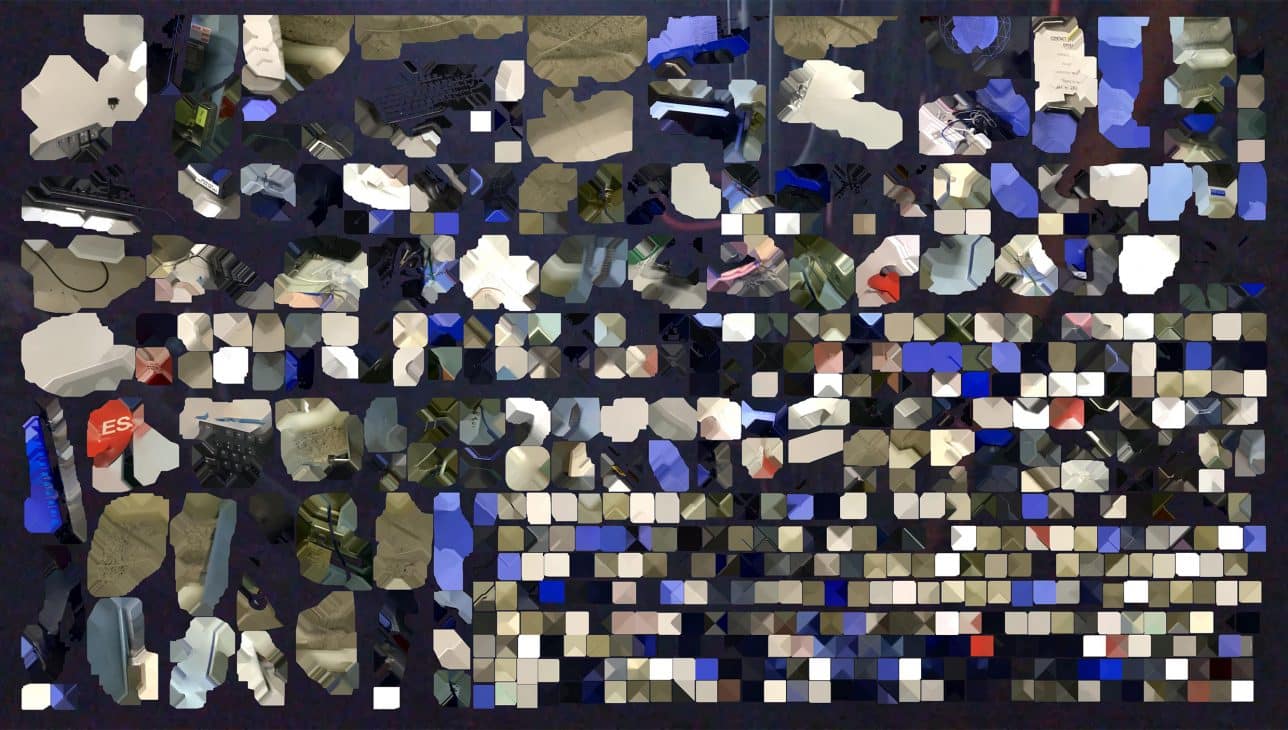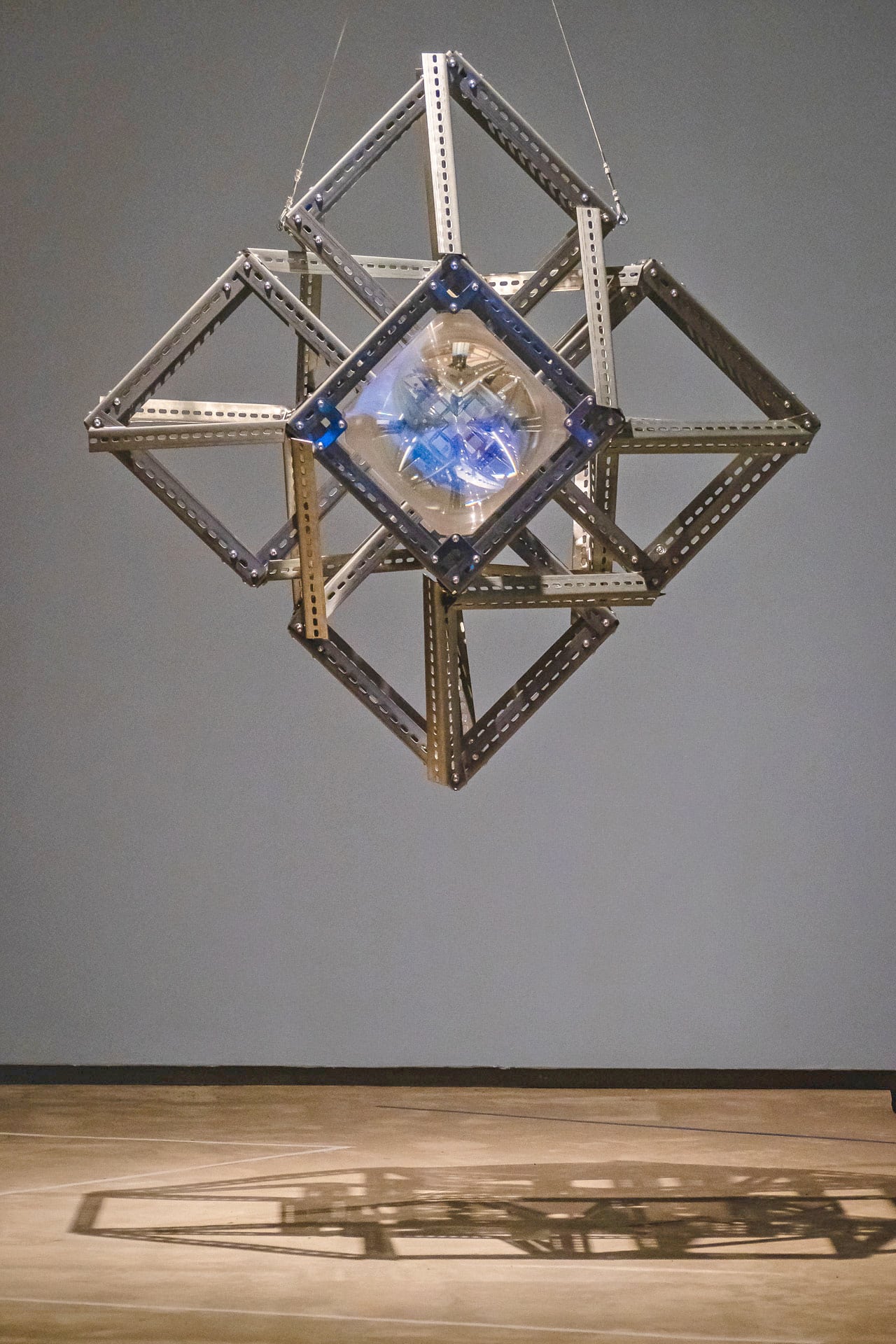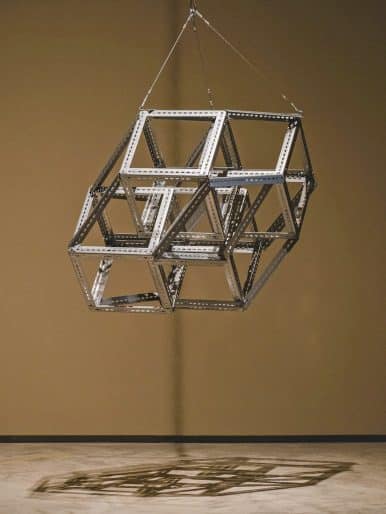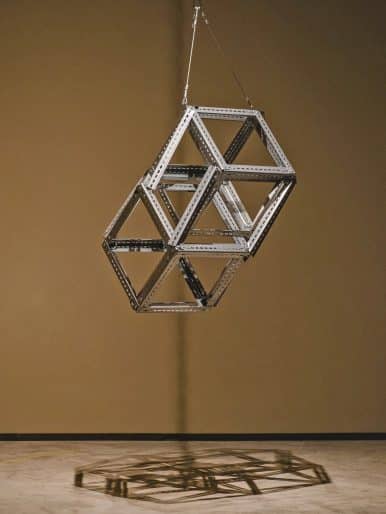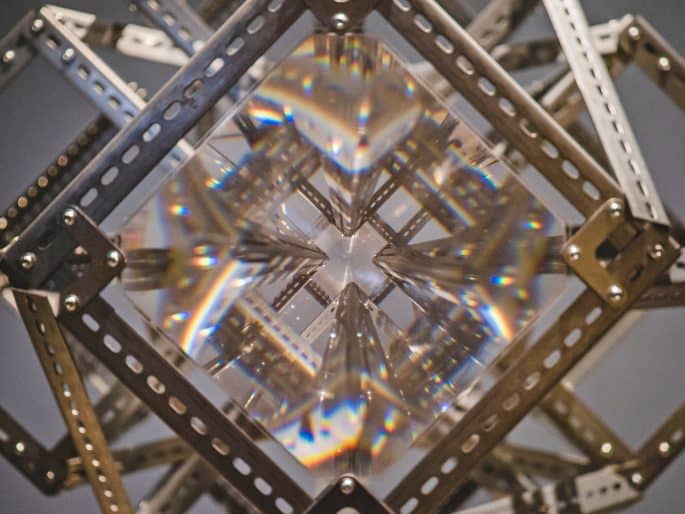Works in sculpture, installation, textile and video by Nadia Lichtig, Josèfa Ntjam, Anne Riley and Jol Thoms consider and adjoin different forms of knowledge and experiment with the contours of the unknown universe.
How did the artists create Drift: Art and Dark Matter?
Artists and physicists exchanged ideas and approaches to propel artistic speculation about this (as yet) unknown matter. Given the outline of such a “known unknown,” artists Nadia Lichtig, Josèfa Ntjam, Anne Riley and Jol Thoms reflect on the “how” and “why” of physics and art as diverse and interrelating practices of knowledge. The artists’ distinct practices have led to varied and challenging expressions, such as new kinds of sensitivity, statements of poetic freedom, questions about the function of knowledge, and explorations of entangled social and ecological relations. Thinking across disciplines, they have created works that connect scientific ideas of dark matter with the pursuit of that which has never been sensed.
Think about the land you’re on right now. Consider the history, geology and ecology of this place.
Imagine the lives, relationships and politics that have played out across this place.
Hold these visible and invisible layers in your mind.
Transcript
- Name Text
Blank Spots is a series of frottages (imprints) taken in various European locations: Bremen and Berlin, Germany; Aix-en-Provence and Montpellier, France; and Zamość and Poznań Poland. Each is a place where a crime has taken place. The artist has cleaned the floor with fabric or copied the structure of the floor through a rubbing process. Frottages from new locations will be added over time to this ongoing piece. The accompanying audio includes sounds of breathing. In a rhythmic sequence, theatre lights installed above the canvases constantly frame and reframe them. For Lichtig, not unlike a scientist experimenting in astroparticle physics, the artist “reaches into the dark, looking for traces of ancient light.”
Scientists who study astrophysics can gain information about dark matter by studying galaxies; Lichtig is scanning the Earth with Blank Spots, an investigation of inconspicuous, neglected matter. Cosmologists tell us that the matter of which we are made, the atoms and molecules that make up the plants, animals, oceans and even all the other planets and stars, is dust ejected from ancient exploding stars. Blank Spots captures dust understood as remainders of experience. Indeed, the dust Blank Spots evokes is a poor dust, not carrying the aura of nobility and glory associated with stars.
The artist would like to thank Jürgen Jürgen Kääriäinen, Adair Redish and Mark Birksted for lighting technical support and sound technician, Christian Bouyjou.
Blank Spots Notes is a series of retranscriptions and reinterpretations of quotes concerning science, breath and dust. The series is to be interpreted as a performance by six voices.
Blank Spots Notes, 2021, Chapter 1 (pdf)
Blank Spots Notes, 2021, Chapter 2 (pdf)
Blank Spots Notes, 2021, Chapter 3 (pdf)
Blank Spots Notes, 2021, Chapter 4 (pdf)
Blank Spots Notes, 2021, Chapter 5 (pdf)
Dust (Reinigungsarbeiten)
Dust is a series of photograms that explores the relation between dust, painting and cleansing with the help of various household liquids (rinsing agent, oil, cosmetic cream…) on glass.
Untitled (Headless)
The subject of this series is the construction process of an art work itself. Lichtig considers the process to be “headless”, in that it is always in progress, weaving without beginning nor end. She makes an analogy to dark energy and dark matter, that are not enclosed within discernable limits of beginning and end.
Bearing a glowing substance, Ntjam’s futuristic alchemical vessel takes inspiration from the liquid argon scintillation of the DEAP-3600 dark matter detector at SNOLAB. It seems, however, to be resting only temporarily on Earth.
Josèfa Ntjam, Myceaqua Vitae, 2020, video with sound. Collection of the artist. Photo: Tim Forbes
Josèfa Ntjam, Organic Nebula (detail), 2019, carpet, photomontage. Collection of the artist
Josèfa Ntjam’s work offers a conduit for myth, a rhythmic and poetic space for the multiplication of voices, trance states and speculation about shapes of being. It considers science to be inseparable from aesthetics and narrative. In her video installation, reminiscent of a spacecraft console—the kind familiar from science fiction—is used to visualize “alien” signals. The video presents a story of an unclassifiable bioluminescent organism.
Josèfa Ntjam, Myceaqua Vitae, 2020, video with sound. Collection of the artist. Photo: Tim Forbes
Josèfa Ntjam, Organic Nebula (detail), 2019, carpet, photomontage. Collection of the artist
Video: Josèfa Ntjam, Myceaqua Vitae, 2020, video with sound. Collection of the artist
Anne Riley creates a dark matter garden outside of the gallery. The darkness and softness of soil are vital for plants to take root. Since the two kilometres of rock between the underground lab and the surface of the Earth filters out other particles and radiation for which the experiments are not searching, SNOLAB may yet be a site for direct detection of dark matter. To make an energetic space for healing and connecting with human and non-human relations, Riley seems to suppress the “background” of colonial “noise” in science and art. Through these works, Riley performs a kind of lively opacity.
In her Drift: Art and Dark Matter residency, Anne Riley focused on the bodily sensitivity of awareness, seen through the mindfulness of emotional labour and the ways in which indigeneity appears or doesn’t appear. Riley’s attention to dark matter physics is guided by her investments in queer touch, the flux of identity and the ethics of responsibility. She negotiates her presence in the exhibition space through a conversational video document.
Video: Anne Riley, the heart of the matter, 2020, video with sound. Collection of the artist

Jol Thoms
Jol Thoms borrows the imagery, materials and strategies of physics, composing them in an art context to probe the ecological ethics of our time. For example, borrowing a strategy from theoretical physicists, he plays with higher dimensions throughout his installation, made explicit in his metal “hypercube” sculptures titled The Bulk: Frameworks. The provocative flattening and layering of complex dimensional objects continues in his Isomorphis prints, in which he layers flattened 3D scans of SNOLAB experiments to expose gaps and hidden strata within scientific classification methodologies. Thoms’s installation suggests a multi-dimensional view of the SNOLAB site which he refers to as “holographic,” reading context and agency through vast cosmic and geological time scales. The piece reflects on interconnected components of land: the comet that hit the location 1.85 billion years ago, and the resulting emergence of copper and nickel deposits within its rock; how the land is both a major mining site and the object of debated government treaties with Indigenous peoples; and how the rock itself isolates SNOLAB from the interference of surface radiation so that experiments can search for rare cosmic particles.
Nearly all of the elements in our bodies come from the dusty debris of long-dead stars.
Consider how you embody the vast cosmos.
Breathe into that.


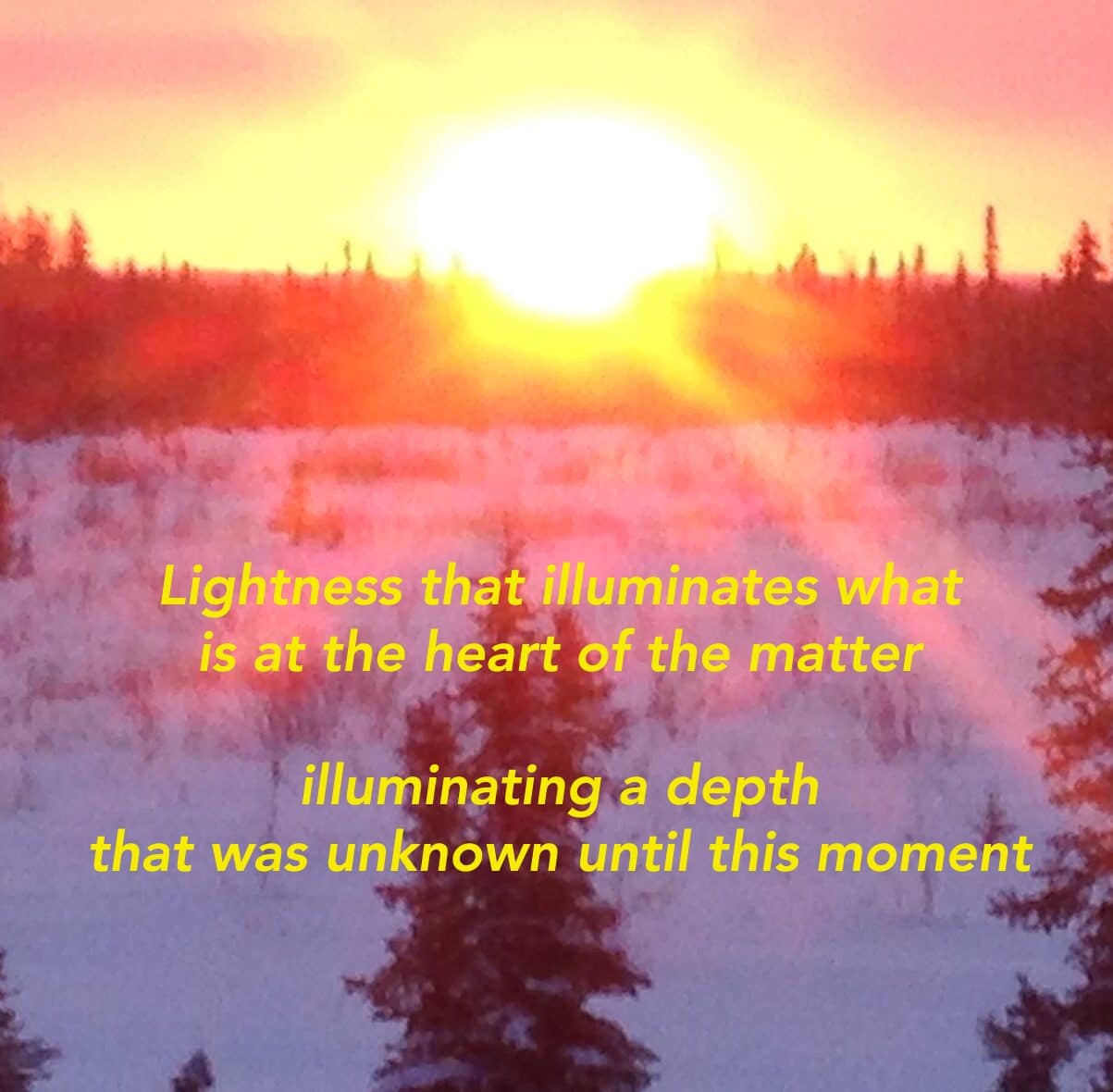
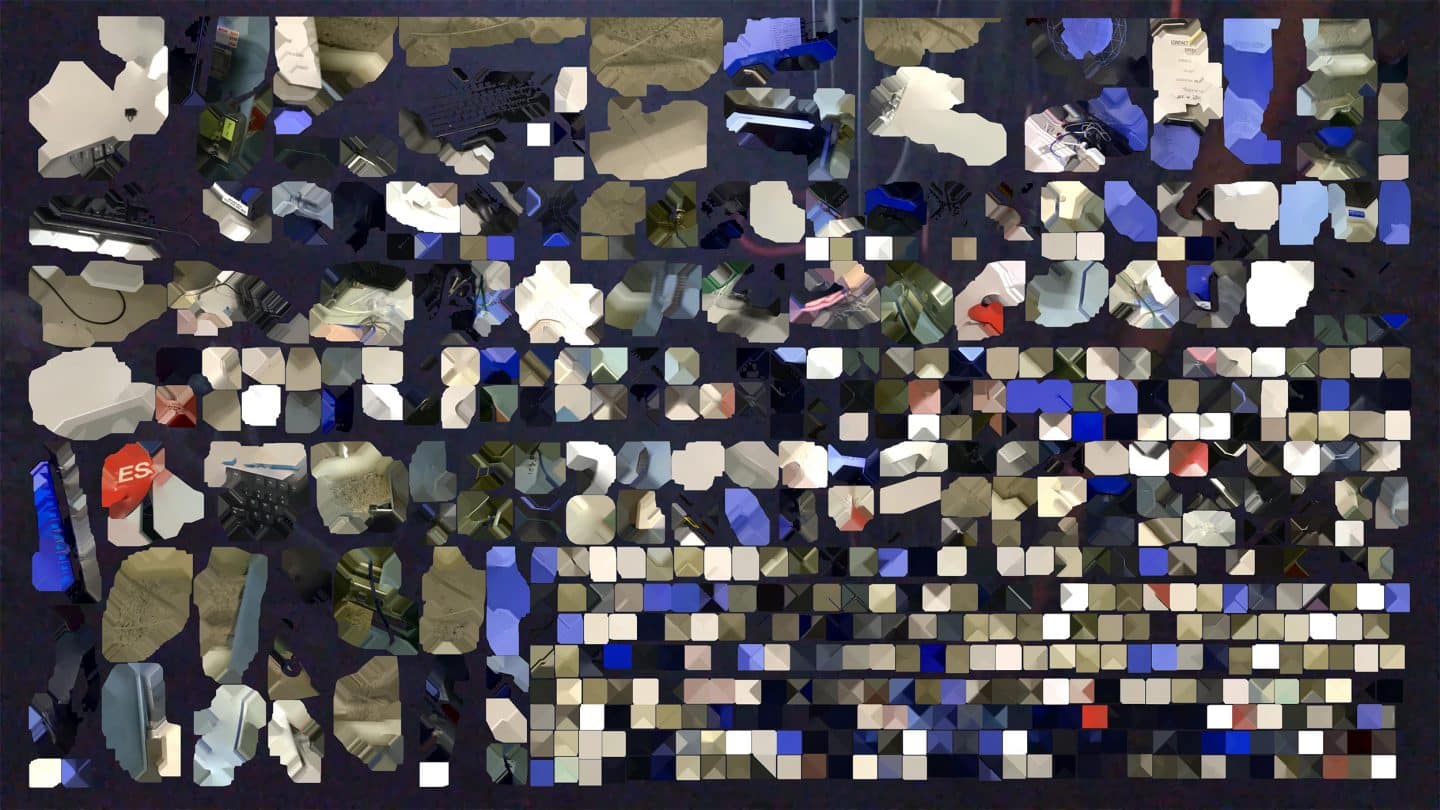
Think of an object that you hold dear. Imagine the spirit and energy of this object.
Have a conversation with it. Start off by asking what message it has for you.
Quietly wait for an answer.
